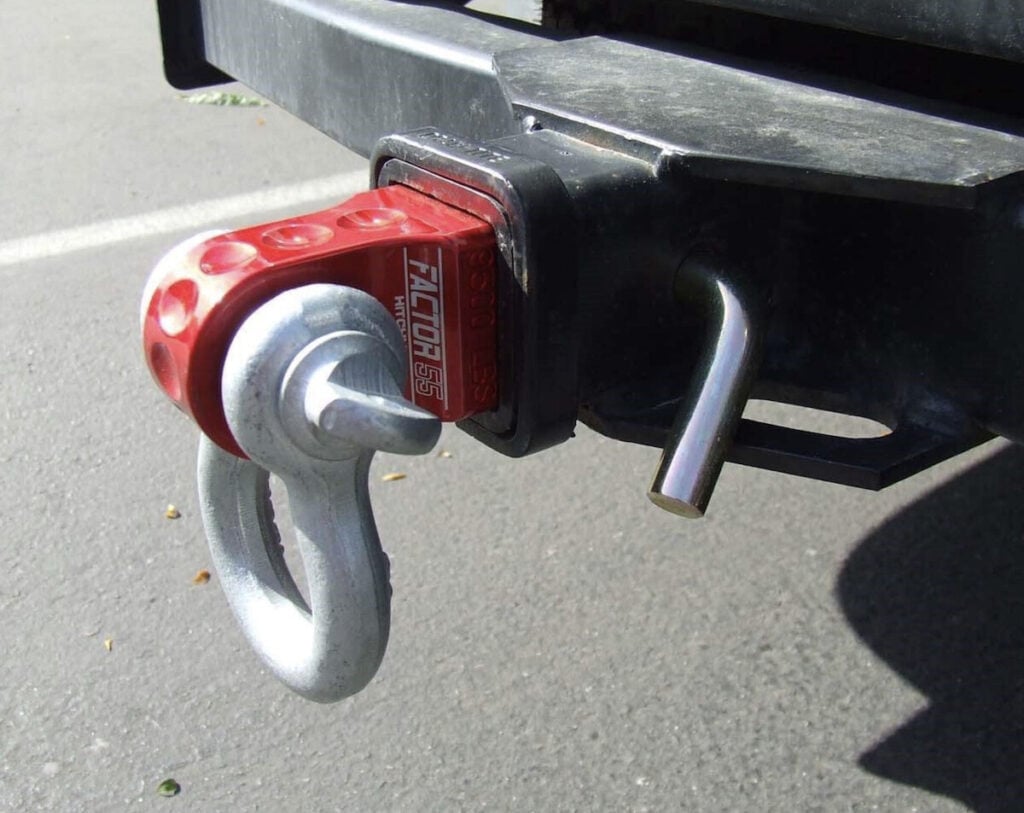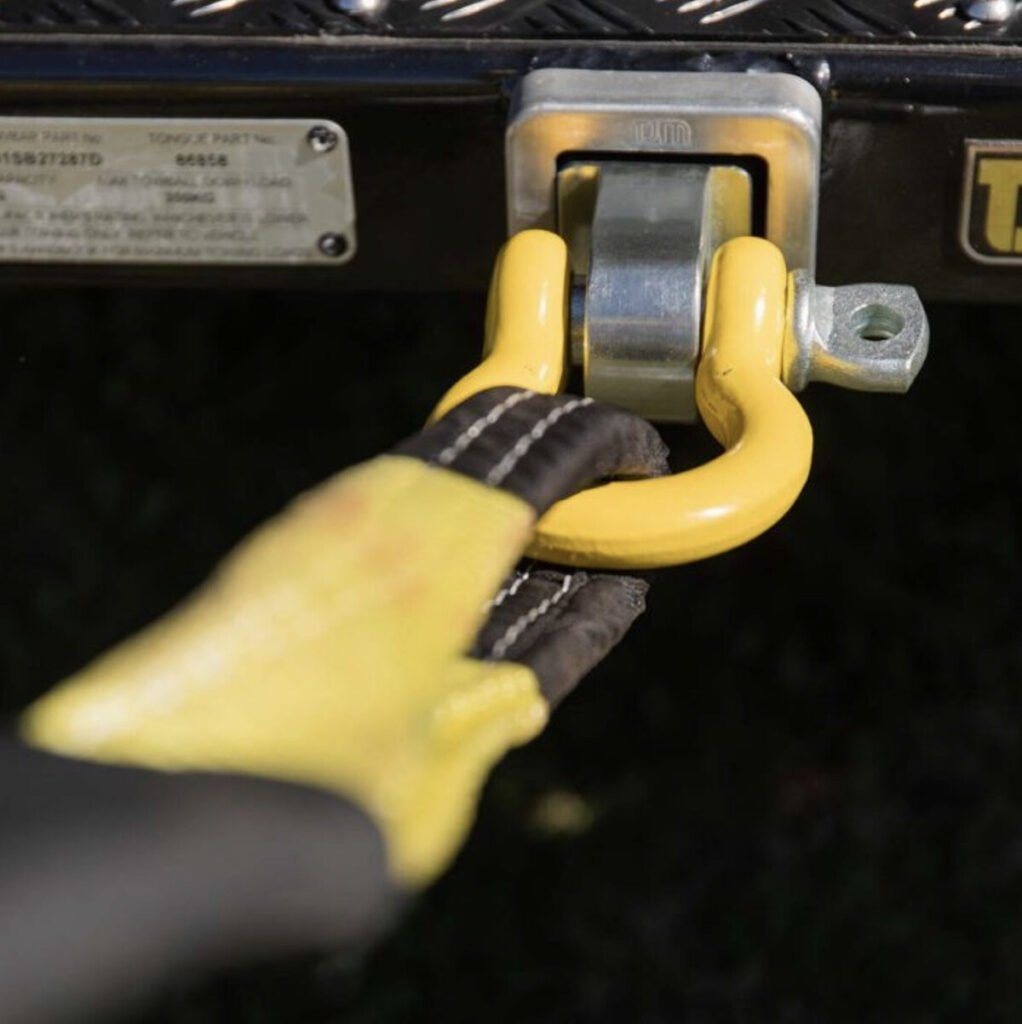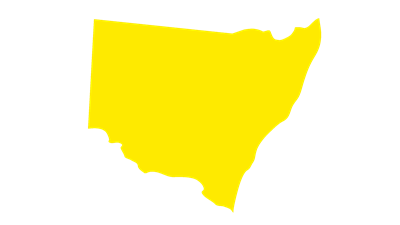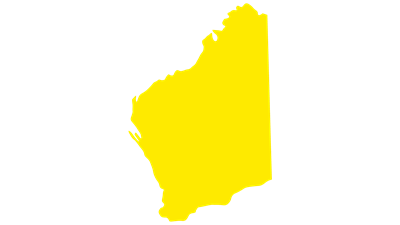The GWM Tank 500 is the brand’s large 4×4 wagon and it’s an impressive piece of gear. It’s a well-equipped three-row, seven-seater that could be considered to be a cheaper alternative to a Toyota LandCruiser 300.
Cheaper in that it costs just $73,990 drive-away, which is a lot less than an LC300, but not cheaper in its levels of equipment. You’d need to be looking at high-spec LCs like the $140k-plus GR Sport and Sahara models to get the same level of kit that comes standard in the Tank 500 Ultra.
The body-on-frame Tank 500 marks the tape at 5078mm long and 1934mm wide; for comparative purposes, the LC300 GR-S runs out at 4995mm and 1990mm over the same measurements. The Tank rides on a 2850mm wheelbase, exactly the same as what’s under the LandCruiser.
There are currently two models in the Tank 500 line-up; the Luxury and Ultra models both feature hybrid powertrains. A new Tank 500 variant is currently undergoing evaluation for Australia that could introduce a plug-in hybrid powertrain, but this is not locked in at the time of writing.
JUMP AHEAD
What do you get?
Here we’re testing the $74k Ultra which is the top-of-the-line model loaded with features.
Standard equipment includes auto-levelling LED headlights; 18-inch alloy wheels; a powered sunroof; Napa leather interior trim with heating, massager and eight-way power adjustment on the driver’s seat and six-way power adjust on the front passenger’s seat; power fold third-row seats; rear side window blinds; and power deploying side steps.
Other interior features include a heated steering wheel; 14.6-inch touch infotainment screen with 360° view monitor and clear chassis view; 12.3-inch digital gauge cluster; head-up display; wireless CarPlay and Android phone mirroring; a 12-speaker premium Infinity audio system; and active cabin noise cancelling.
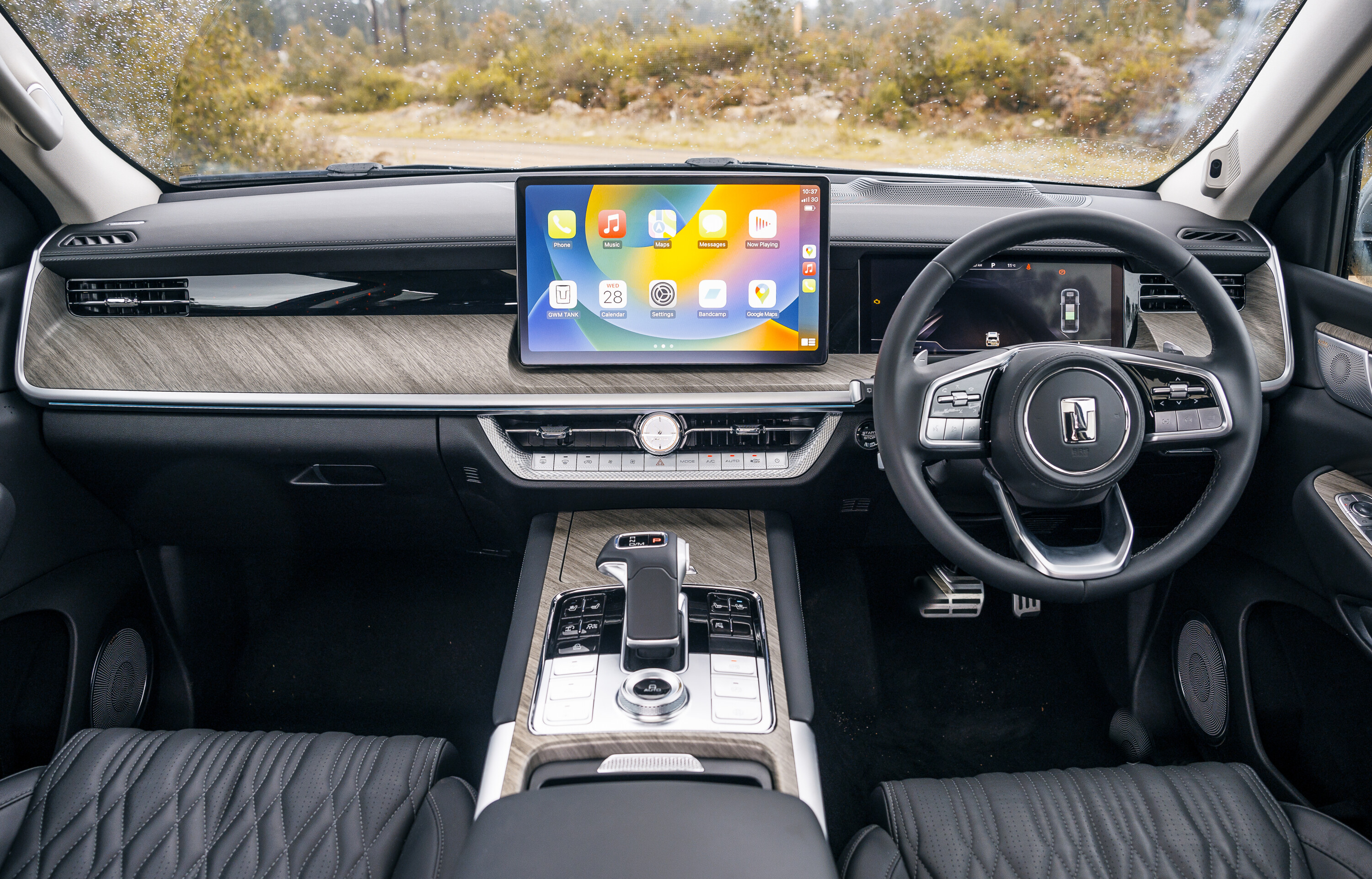
Back to top ⬆️
Powertrain
The powertrain starts with a 2.0-litre turbocharged petrol engine backed by an electric motor in the bellhousing, which combined put out a claimed 255kW and a meaty 642Nm. Behind the engine and motor is a nine-speed automatic transmission; on-demand, dual range transfer case; and front, centre and rear locking differentials.
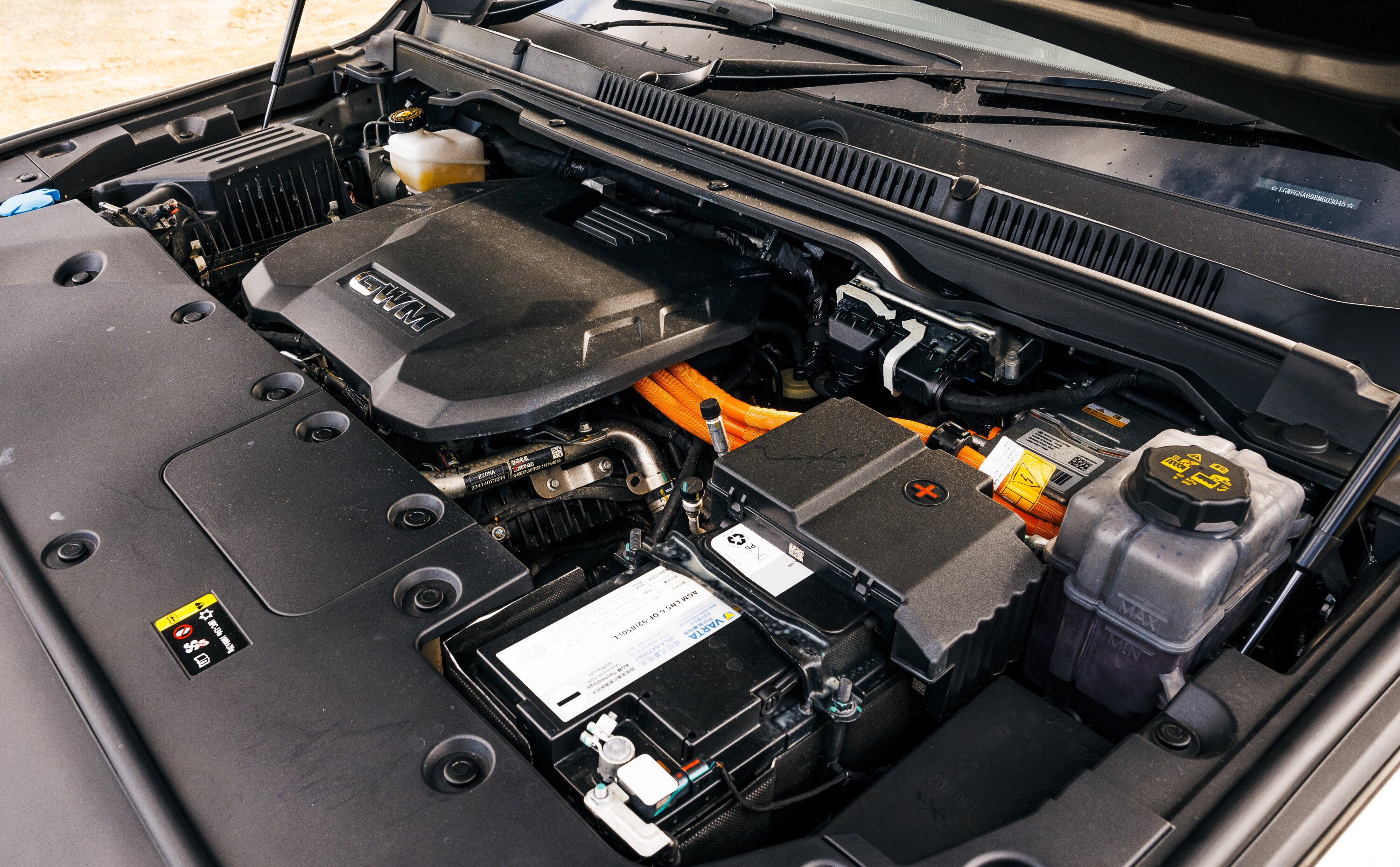
Safety and warranty
Standard safety kit includes AEB; TPMS; front, side centre and curtain airbags; EPS; ETC; forward collision and lane departure warnings; driver monitoring system; and all the other ADAS features required to gain a five-star ANCAP safety rating.
There’s no hiding from the high level of safety, comfort and off-road features that come standard in the Tank 500, which make it an attractive consideration for many family buyers; features that you’ll be paying more than $100,000 for in other off-road capable luxury wagons.
Backing it up is the GWM Care 777 ownership package offering a seven-year unlimited kilometre warranty, seven years of roadside assist and seven years of capped-price servicing.
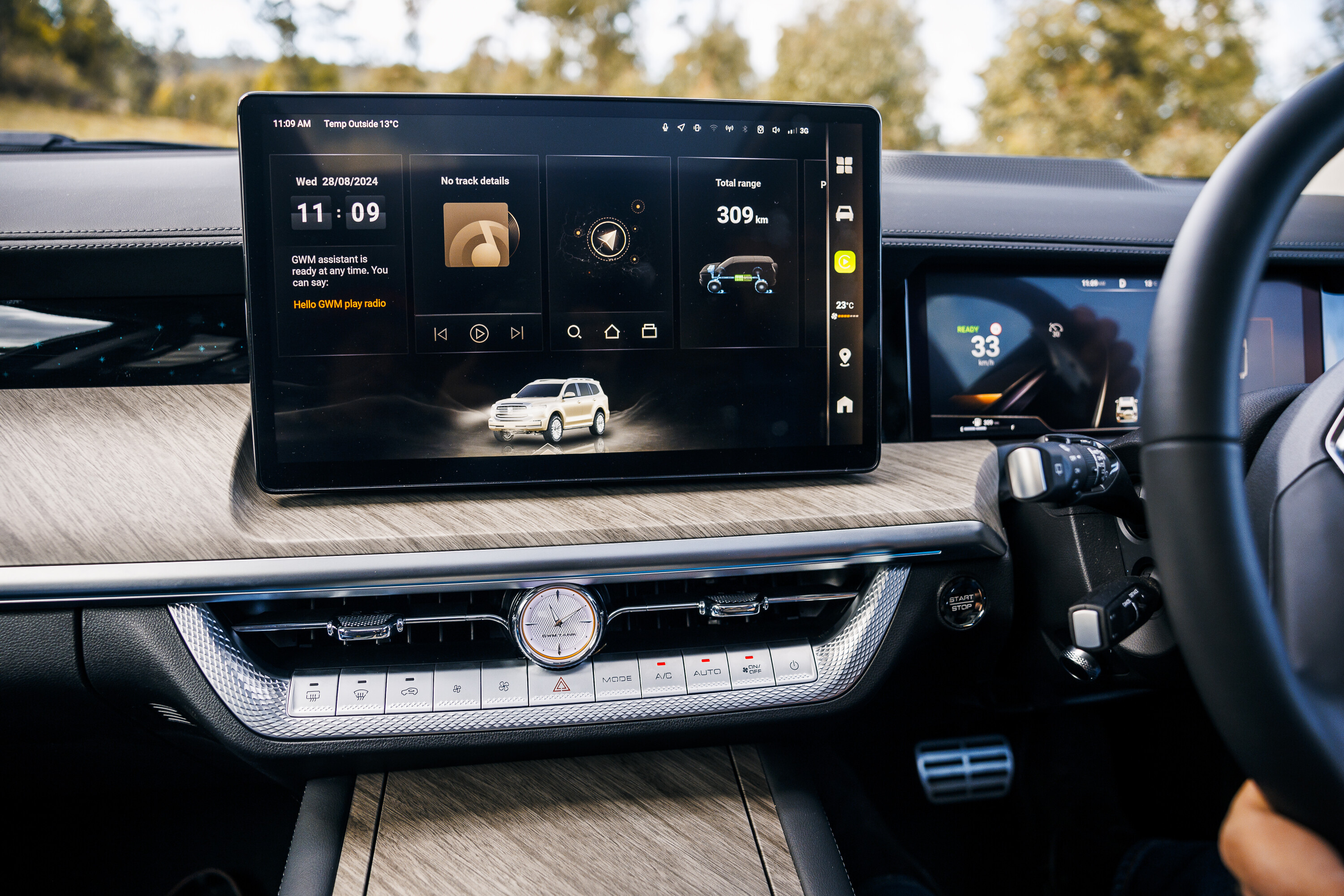
Back to top ⬆️
On-road driving performance
Slip inside the Ultra and straight away there’s a feeling of luxury and the level of equipment is obvious. There’s no escaping the massive multimedia and the dash screens, while the soft leather seats give a feeling of quality.
Some might see the powered side steps as a luxury, but for me they are nothing more than a trip hazard and a great way to get your jeans dirty. Maybe they would be more useful once you fit that six-inch lift kit you bought from Wish.com, but at standard height they seem unnecessary.
There’s no engine noise when you push the starter button, but the dash signifies that the Tank is ready for action. At light throttle it will move on under electric drive but press the accelerator to get up to road speed and the turbocharged petrol engine cuts in straight away. There is very little electric power available for full EV driving in this version of the hybrid system.
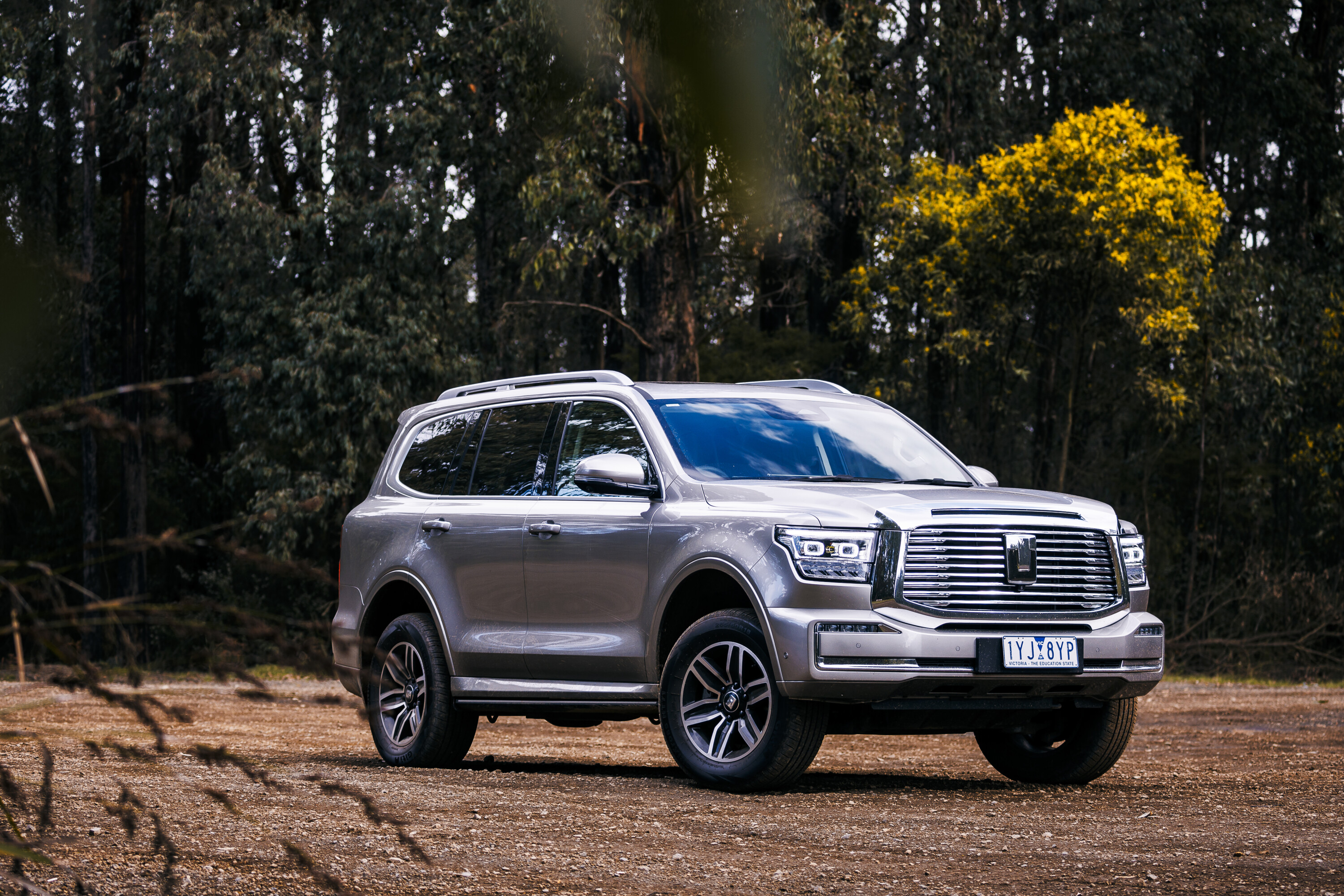
Power comes in responsively but smoothly. There can be a hesitation in the transition from electric power to the petrol engine, and this is noticeable when you put your foot down to overtake on the highway. It’s a small hesitation but one you will want to get used to. The transmission is seamless and smooth; the paddle shifters behind the steering wheel are handy for manual gear selection when off road and on tracks.
The steering column is power adjustable for both height and reach but for me, it doesn’t come back far enough to be in the ideal position for driving. The panoramic powered glass roof is huge and lets in plenty of light when uncovered which is something I always appreciate in any vehicle.
The ride from the coil spring IFS and multi-link live-axle rear is firm and offers plenty of control but it can feel a bit jittery over high frequency small bumps and corrugations in the road surface, be that on sealed or gravel roads. There’s no getting away from the fact the Tank is a large, top-heavy wagon, but its handling is predictable and well controlled.
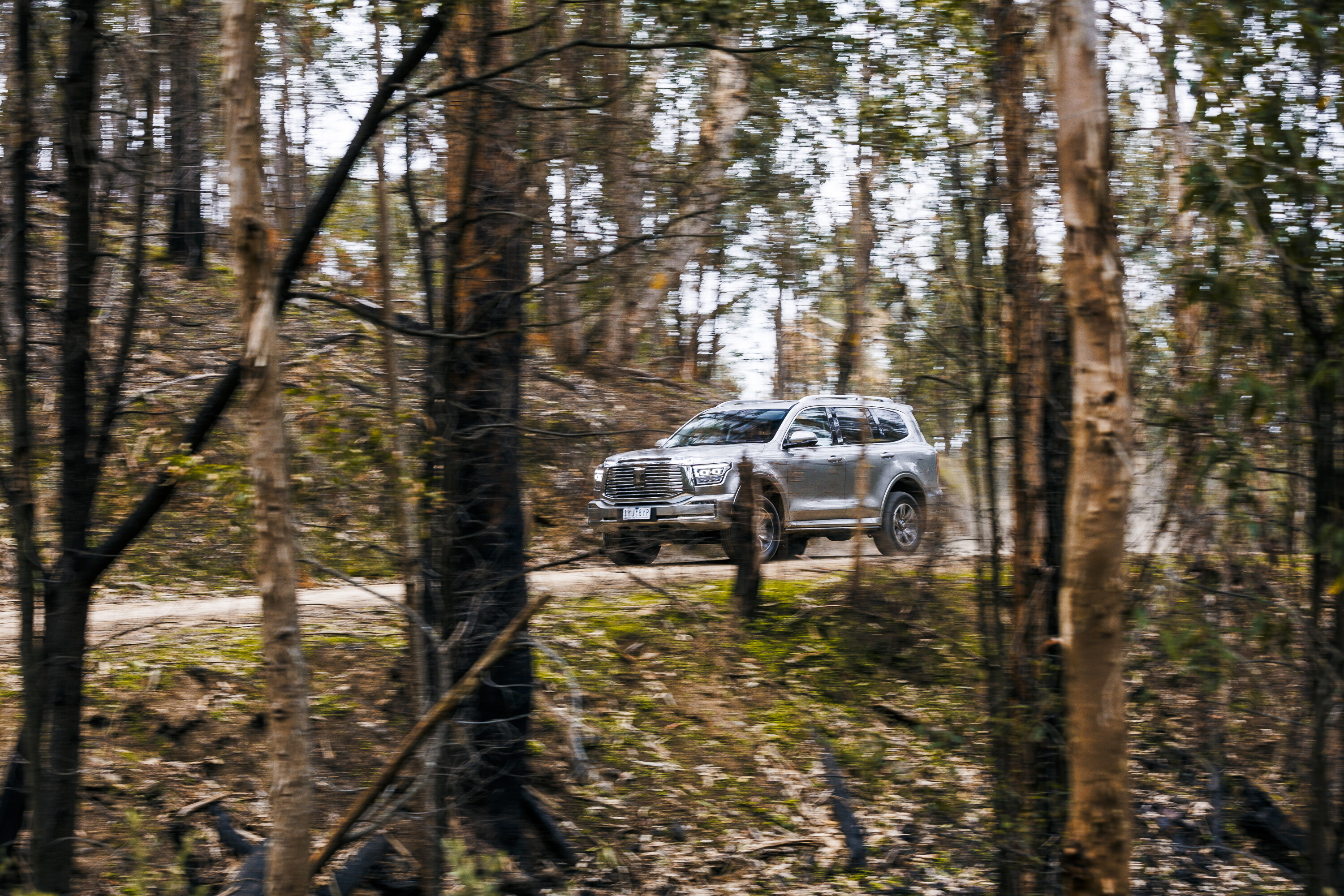
Its size and weight is reflected in the fuel consumption figure, but the hybrid powertrain does its thing to keep that as low as possible; throughout our week with the 500 it returned a figure of 11.1L/100km, which is a fair bit more than the ADR combined cycle figure of 8.5L/100km. The figure of 11.1 is comparable with large diesel-fuelled 4×4 wagons without hybrid assistance.
As we found on the launch of the Tank 500, and again when testing the GWM Cannon, the driver monitoring system is annoying and frustrating; it constantly spits out warnings and advice that are more incessant than a nagging passenger, and for me this would be a deal-breaker when considering any new vehicle. GWM, like other manufacturers using similar monitoring systems, has recognised this and is working on a software upgrade that will ease the nagging, and we look forward to driving the updated GWM vehicles.
Back to top ⬆️
Off-road driving performance
With healthy ground clearance, decent low-range gearing, a sensible tyre size, and good underbody protection, the Tank 500 has better off road capability than many other standard 4x4s.
More than any other feature this comes courtesy of its lockable front and rear differentials, as well as the locking centre diff. The number of electronic driving modes offered for both on and off road driving is becoming ridiculous and the Tank is no different to many other new 4x4s in this regard, giving the driver a choice of nine different modes, which is probably twice as many as you would ever need.
The locking diffs are really all the off-road hardware you need in any 4×4 heading into rough terrain and they do a better job than any electronics to get drive to all the wheels when you want it. The Tank is one of the few new 4x4s to offer a locking front diff in addition to its centre and rear locking diffs.
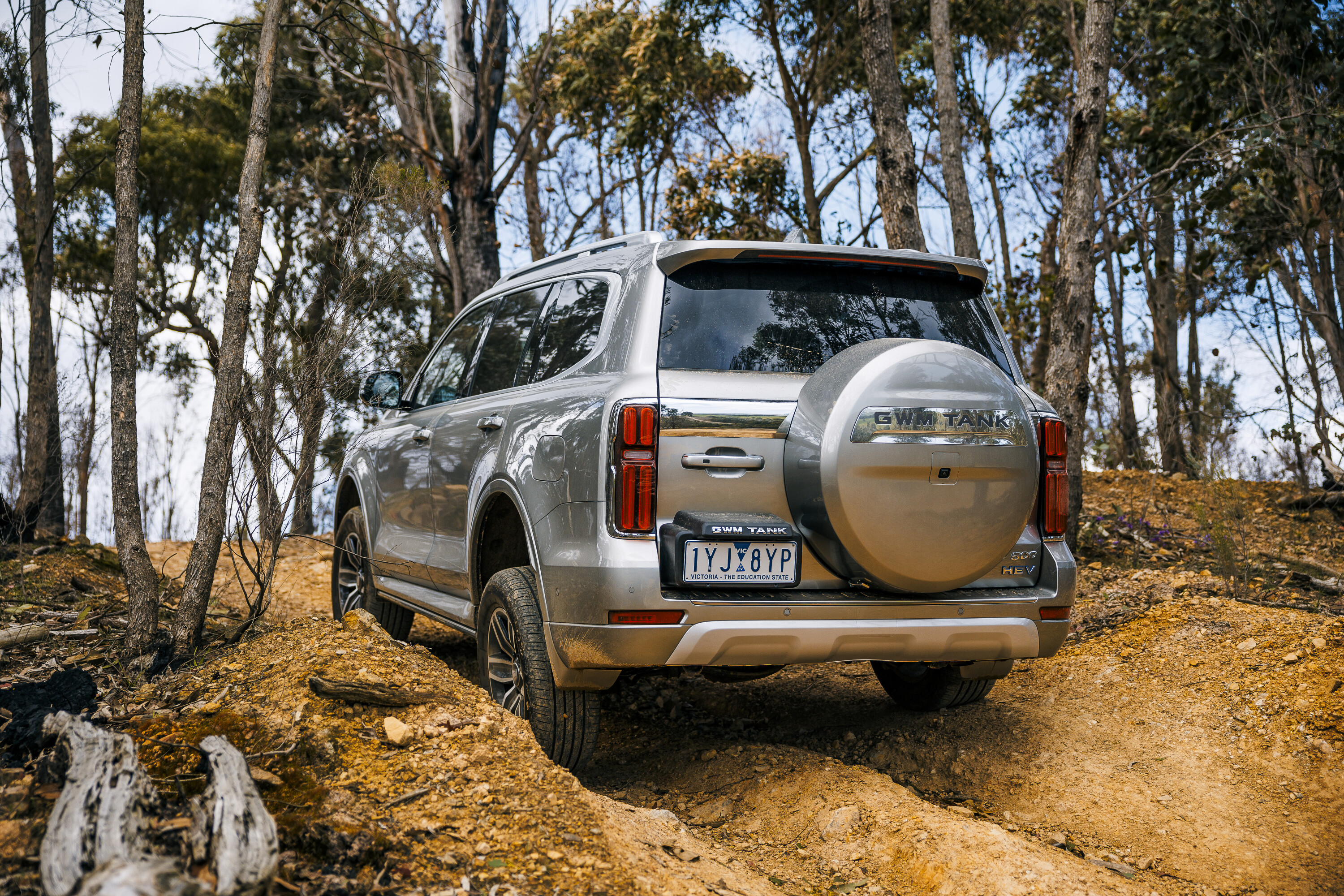
Once in low range with all three diffs locked, a climb with deep moguls that we thought would challenge the Tank proved no obstacle at all with some careful wheel placement and light throttle application. Using the crawl control could have made it even easier for a less-experienced driver, but it shows the advantage of getting maximum drive to the wheels. This was driven on road-going tyre pressures which impressed us.
There were a couple of small niggles on gravel roads. Firstly, the lane centering constantly intervenes and makes automatic steering adjustments as it tries to stay in lanes that aren’t there, although this is something you might get used to. The other is that the auto-braking won’t let you get close to objects like long grass when turning in tight spaces in the bush, adding to the difficulty of multi-point turns.
| Off-road specs | |
|---|---|
| Approach angle | 30u00b0 |
| Ramp-over angle | 22.5u00b0 |
| Departure angle | 24u00b0 |
| Ground clearance | 224mm |
| Wading depth | 800mm |
Back to top ⬆️
Verdict
As we said at the start of this test, the Tank 500 Ultra Hybrid is an impressive vehicle as it offers levels of equipment and ability that are only available for thousands of dollars more from other manufacturers.
Its mix of luxury and refinement is unrivalled at a sub-$100k price and it will open the eyes of many 4×4 wagon buyers to the relatively new brand. While there are some features like the powered side steps, annoying driver monitor and number of drive modes that seem gimmicky, the Tank delivers the important things like performance and ability with great old-fashioned elements like locking diffs, good ground clearance, sensible tyre size and functional cabin layout. Add in the luxury features and GWM delivers a strong package in the Tank 500.
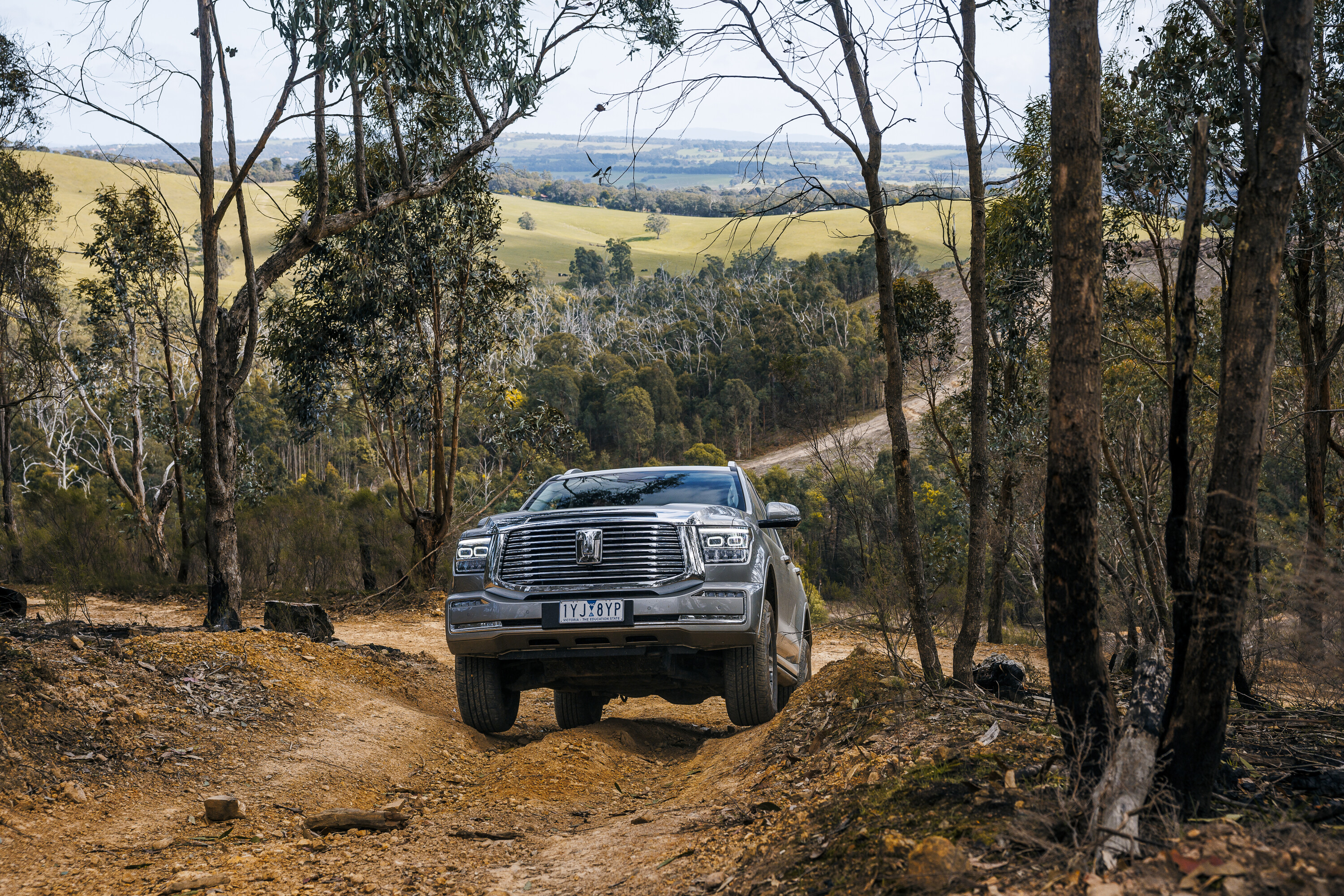
Back to top ⬆️
Specs
| 2024 GWM Tank 500 Ultra hybrid | |
|---|---|
| Price | $73,990 (drive-away) |
| Engine | Petrol-electric hybrid |
| Capacity | 1998cc |
| Max power | 255kW @ 5500-6000rpmu00a0 |
| Max torque | 648Nm @ 1700-4000rpm |
| Transmission | 9-speed automatic |
| 4×4 system | Full-time, dual range 4×4, locking front, centre and rear differentials |
| Construction | 5-door, 7-seat wagon on ladder frame chassis |
| Front suspension | Double wishbone, coil IFS |
| Rear suspension | Multi-link coils |
| Tyres | 265/60R18 |
| Kerb weight | 2605kg |
| GVM | 3395kg |
| GCM | 6705kg |
| Towing capacity | 3000kg |
| Payload | 790kg |
| Seats | 7 |
| Fuel tank | 80L |
| ADR fuel consumption | 8.5L/100km |
| On-test fuel consumption | 11.9L/100km |
Back to top ⬆️
Off-roading can be an exhilarating experience, but it comes with its fair share of challenges. Getting stuck is not uncommon, and without proper equipment it can quickly turn into a nightmare.
This is where rated recovery points come in handy. These recommended products are intended as a starting point, to give you an idea of what’s available. We’ve also included information on Ford Australia’s genuine accessories, in case you’d prefer to stick to OEM.
What it is: Attachments your vehicle can be dragged by or from.
Why you need it: Sooner or later you’ll get stuck or need to recover someone who is stuck. At that point significant forces will be exerted on your vehicle, and you need an attachment point strong enough for the job.
The Ranger NG includes two recovery points at the front, about which the Ford manual says: “Do not apply a load to the recovery hooks greater than the gross vehicle weight rating of your vehicle.” We advise considering using a bridle to split, but not halve the load on each point.
| Material | Max load | Suitable for soft shackles | |
|---|---|---|---|
| ARB front recovery points | Forged steel | 8000kg (at full steering lock) | Yes |
| MaxTrax Hitch 50 rear recovery point | Aluminium/Steel | Rated to 8800kg | Fits in 50mm square towbar receiver |
| Drifta Factor 55 Hitchlink 2.0 rear recovery point | Aluminium | 4300kg | No |
| TJM rear recovery hitch | Mild steel | 4750kg | No |
ARB front recovery points
ARB front recovery points are robust attachment points designed for off-road vehicles, facilitating safe recovery operations when stuck in challenging terrains like mud or sand.
Constructed from reinforced steel, they can withstand significant loads and are typically designed for specific vehicle models for easy installation. Each recovery point has a specified load rating, crucial for ensuring safety during recovery. Some include safety features to prevent accidental disconnection.
These recovery points enhance safety, protect the vehicle by evenly distributing loads, and are compatible with various recovery gear.
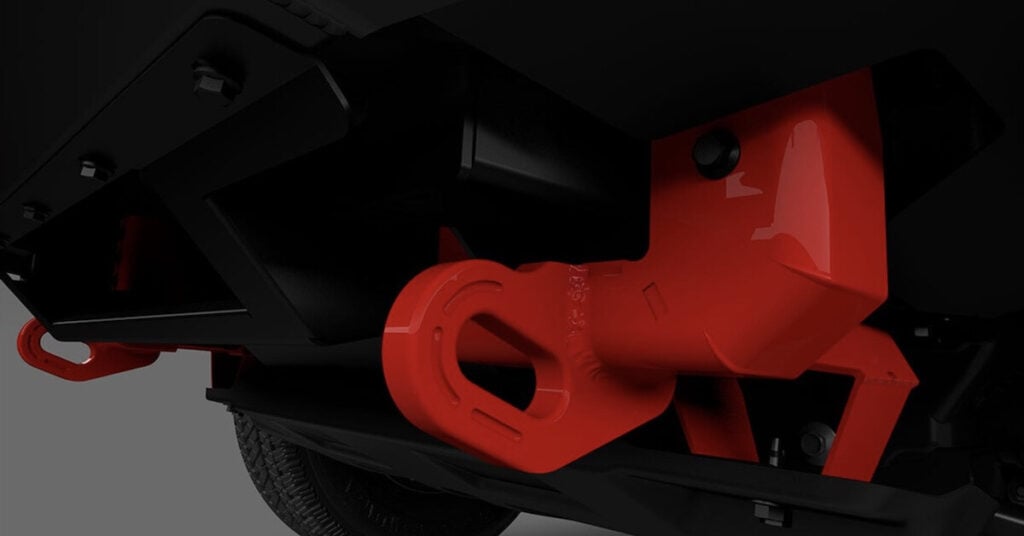
Specifications:
- Material: Forged steel
- Max load: 8000kg (at full steering lock)
- Suitable for soft shackles: Yes
Things we like
- Load rating is at full lock
- Each recovery point rated to 8000kg
- Compatible with soft shackles
Not so much…
- More expensive than generic brands
- Conflicting appearance
- Material: Forged steel
- Max load: 8000kg (at full steering lock)
- Suitable for soft shackles: Yes
MaxTrax Hitch 50 rear recovery point
The MaxTrax Hitch 50 rear recovery point is a handy tool for off-roaders, making it easy to hook up recovery gear like tow straps and winches.
Built tough from materials like aluminum or high-strength steel, it’s designed to take a beating and last. It fits standard two-inch hitch receivers, so you can easily use it on different vehicles. With multiple attachment points, the Hitch 50 gives you options for recovery setups. Plus, a secure locking mechanism keeps everything connected, which is super important during tricky recoveries.
It’s strong enough to handle tough situations, and you can switch it between different vehicles without a hassle. Installing it is a breeze; just slide it into your hitch receiver and secure it with a pin.
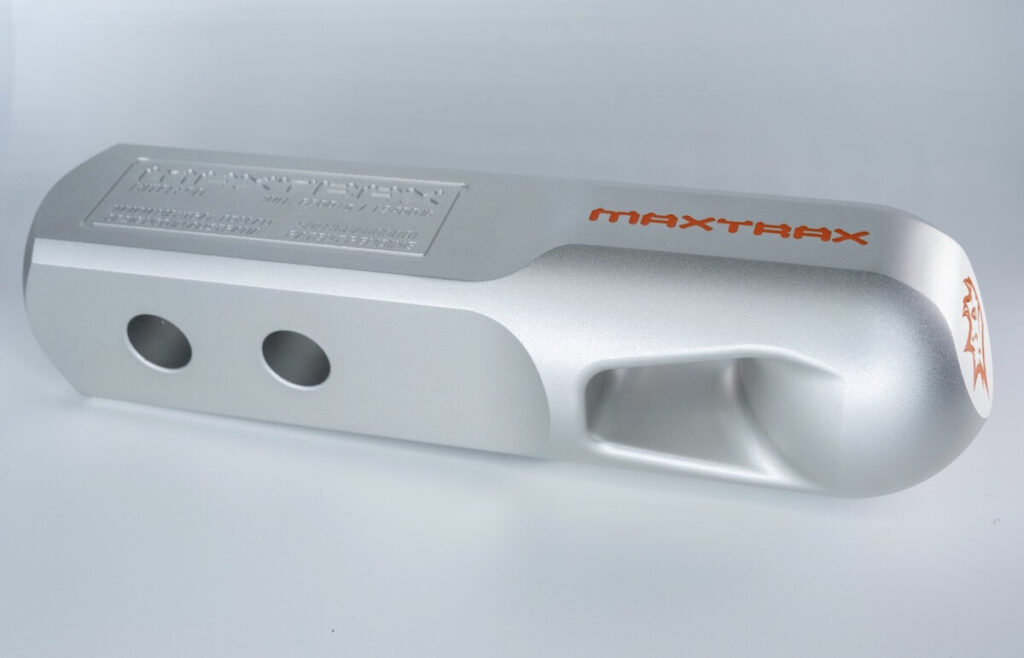
Specifications:
- Suitable for multidirectional pulls
- Rated to 8800kg
- Fits in 50mm square towbar receiver
Things we like
- Suitable for multidirectional pulls
- Rated to 8800kg
- Fits in 50mm square towbar receiver
Not so much…
- Not compatible with VW Amarok towbar
- Not universal fit
- Potential for wear
- Suitable for multidirectional pulls
- Rated to 8800kg
- Fits in 50mm square towbar receiver
Drifta Factor 55 Hitchlink 2.0 rear recovery point
The Drifta Factor 55 Hitchlink 2.0 rear recovery point is a durable accessory designed for off-road vehicles, providing a secure attachment for recovery gear like tow straps and winches.
Made from high-strength aluminum, it balances lightweight design with robust strength, making it easy to handle. A key feature is its positive locking pin, which keeps the recovery point securely in place, reducing the risk of accidental disconnection during recovery. It fits standard two-inch hitch receivers and is rated for loads up to 10,000 pounds, ensuring reliability in tough situations.
Installation is simple: just slide it into the hitch receiver and secure it with a pin. Regular inspections for wear are recommended.
Things we like
- Lightweight aluminium
- Value for money
- Fits in 50mm square towbar receiver
Not so much…
- Only suitable for inline pulls
- Not compatible with soft shackles
- Material: Aluminium
- Max load: 4300kg
- Suitable for soft shackles: No
TJM rear recovery hitch
Made from heavy-duty steel, the TJM rear recovery hitch is engineered to endure the demands of off-road recovery situations.
The TJM hitch can handle significant recovery efforts, making it suitable for larger vehicles and tough terrain. It is designed to fit standard two-inch hitch receivers, ensuring compatibility with a wide range of trucks, SUVs, and off-road vehicles.
One of the key features of the TJM rear recovery hitch is its multiple attachment points, which allow for versatile recovery setups depending on the situation. The hitch often incorporates a secure locking pin mechanism to prevent accidental disconnection during use, enhancing safety in recovery operations. It’s advisable to conduct regular inspections for any signs of wear, damage, or corrosion to maintain safety and effectiveness.
Things we like
- Can turn hitch horizontal or vertical
- Fits in 50mm square towbar receiver
- Rated 19mm bow shackle included
Not so much…
- Not compatible with soft shackles
- Corrosion risk
- Material: Mild steel
- Max load: 4750kg
- Suitable for soft shackles: No
Ford Australia/ARB licensing agreement
Ford Australia has a licensing agreement with ARB. Order ARB accessories when you order your next-gen Ranger, and they’ll be covered by Ford’s five-year warranty. So if you have a warranty issue, there are no grey areas about which company’s responsible.
If you order ARB accessories after purchase (through a Ford dealer), they’ll be covered by the remainder of the warranty period. If you’d like to know more about the Ford/ARB partnership, then go here.
How we review products
4X4 Australia has been reviewing four-wheel drive vehicles and aftermarket products for more than 40 years.
When looking for the best accessories for your make and model of 4WD, there are some things essential to making sure you have the best off-roading experience. When we compare products, here are some of the things we consider:
- Warranty
- Build quality
- Value for money
- Time and ease to set-up/install
- Weight
- Fit and finish
- How well it gets the job done
- What materials they’re made from
- Corrosion/UV resistance
- Coatings
- Compatibility with other accessories
- Compliance with ADRs and vehicle safety systems
- Country of manufacture
- Load ratings, to determine what’s the best product across each price point.
Back to top ⬆️
There’s a seemingly endless supply of custom wheels available for the next-gen Ford Ranger.
This ranges from sleek and stylish to rugged and aggressive. So whether you’re looking for a set of flashy alloys or tough and durable steelies, there are plenty available to suit your requirements.
What it is: Replacements for the stock Ranger wheels.
Why you need it: High-profile tyres are ideal off-road, so that means they’re wrapped around 17-inch rims. But maybe your Ranger came with 18s or 20s, so you want to swap? Perhaps you need a different offset to run the tyres of your choice. There are many reasons to swap out wheels when building an off-roader.
Buying tips: Ensure the wheels you buy are Ranger-compatible, which means a six-stud with 139.7mm PCD (often written 6×139.7). Also ensure the offset is within legal limits, so no more than a change of 50mm (25mm per side).
You’ll also need to check the load rating matches or exceeds that of the standard wheels – check that on your specific vehicle. There are many companies that make wheels, and each of them make many wheels, so we’ve only listed a few examples to get you started.
| Material | Load rating | Bead restraint | |
|---|---|---|---|
| Method Race Wheels | 356 cast aluminium with T6 heat treatment | 5 & 6 lug, 1200kg / 8 lug, 1650kg | Patented bead grip technology |
| Speedy Wheels | Aluminium alloy or steel | Depends on wheel type | Depends on wheel type |
| Tyrepower | Aluminium alloy or steel | Depends on wheel type | Depends on wheel type |
Method Race Wheels
Method Race Wheels has some great options for the next-gen Ford Ranger, all about durability, performance and style.
These wheels are made from lightweight aluminium, perfect for tackling off-road adventures. You’ll find different sizes and offsets, so you can fit larger tyres for better traction. They come in finishes like matte black and polished aluminium, giving your Ranger a rugged look. Plus, they’re designed to be lightweight for improved handling and have features that help with brake cooling. Some models even offer beadlock technology, letting you run lower tyre pressures on tough terrain without worrying about the tyre dismounting.
Method Race Wheels are a solid pick for anyone wanting to boost their Ranger’s performance and style. Just keep in mind what kind of driving and terrain you’ll be dealing with.
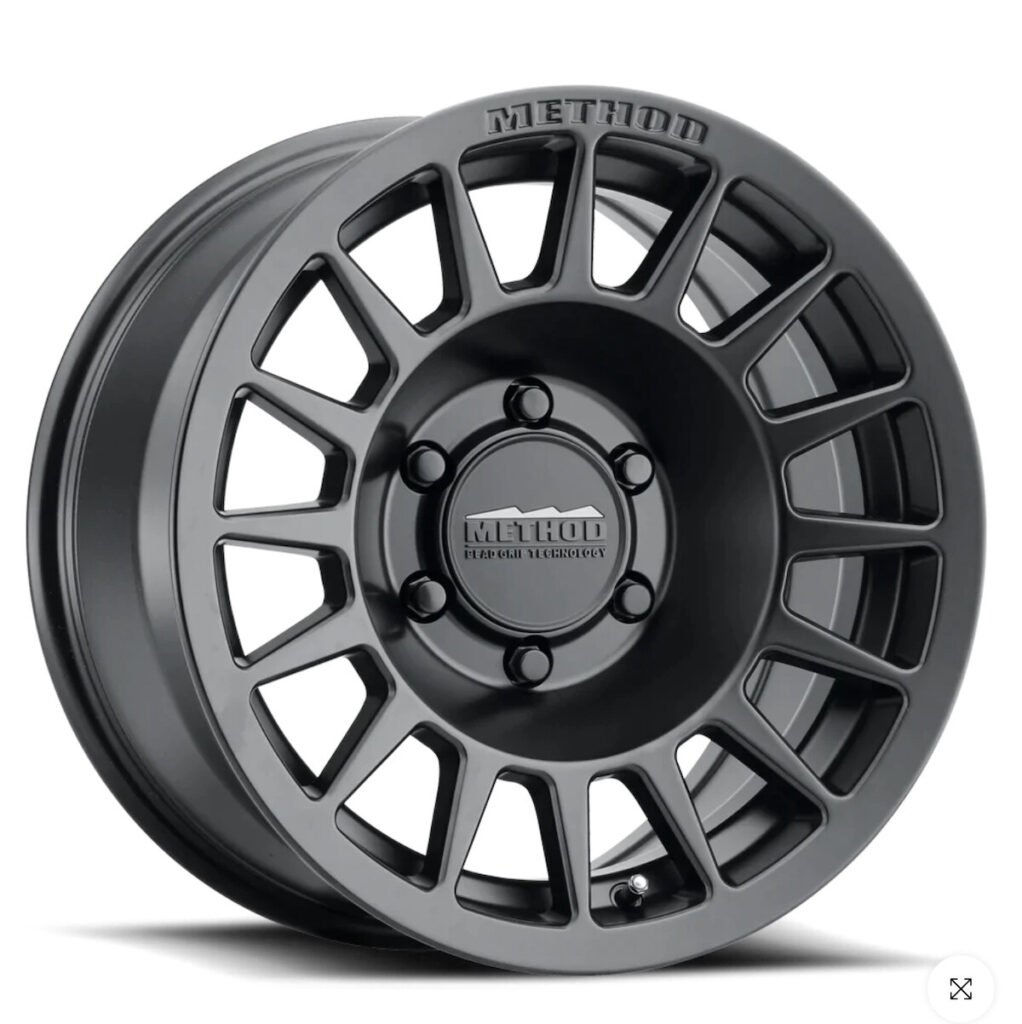
Specifications:
- Material: 356 cast aluminium with T6 heat treatment
- Load rating: Five- and six-lug, 1200kg / eight-lug, 1650kg
- Bead restraint: Patented bead grip technology
Things we like
- Designed to restrain aired-down tyres
- Multiple colours
- Good range of styles
Not so much
- Can be more expensive
- Availability
- Material: 356 cast aluminium with T6 heat treatment
- Load rating: Five- and six-lug, 1200kg / eight-lug, 1650kg
- Bead restraint: Patented bead grip technology
Speedy Wheels
Speedy Wheels offer a diverse selection of wheels tailored for the next-gen Ranger. The line-up features various designs and finishes, allowing owners to find the perfect aesthetic.
One of the highlights of Speedy Wheels is an emphasis on durability. Many of the wheels are crafted from strong materials that can handle the demands of off-road driving, ensuring they stand up to rough terrain. They also come in different sizes and offsets, allowing for compatibility with larger tyres.
Speedy Wheels also provides a variety of styles, from sleek and modern to rugged and aggressive, ensuring there’s something for every taste. The wheels combine style, durability and performance to enhance both on-road and off-road experiences.
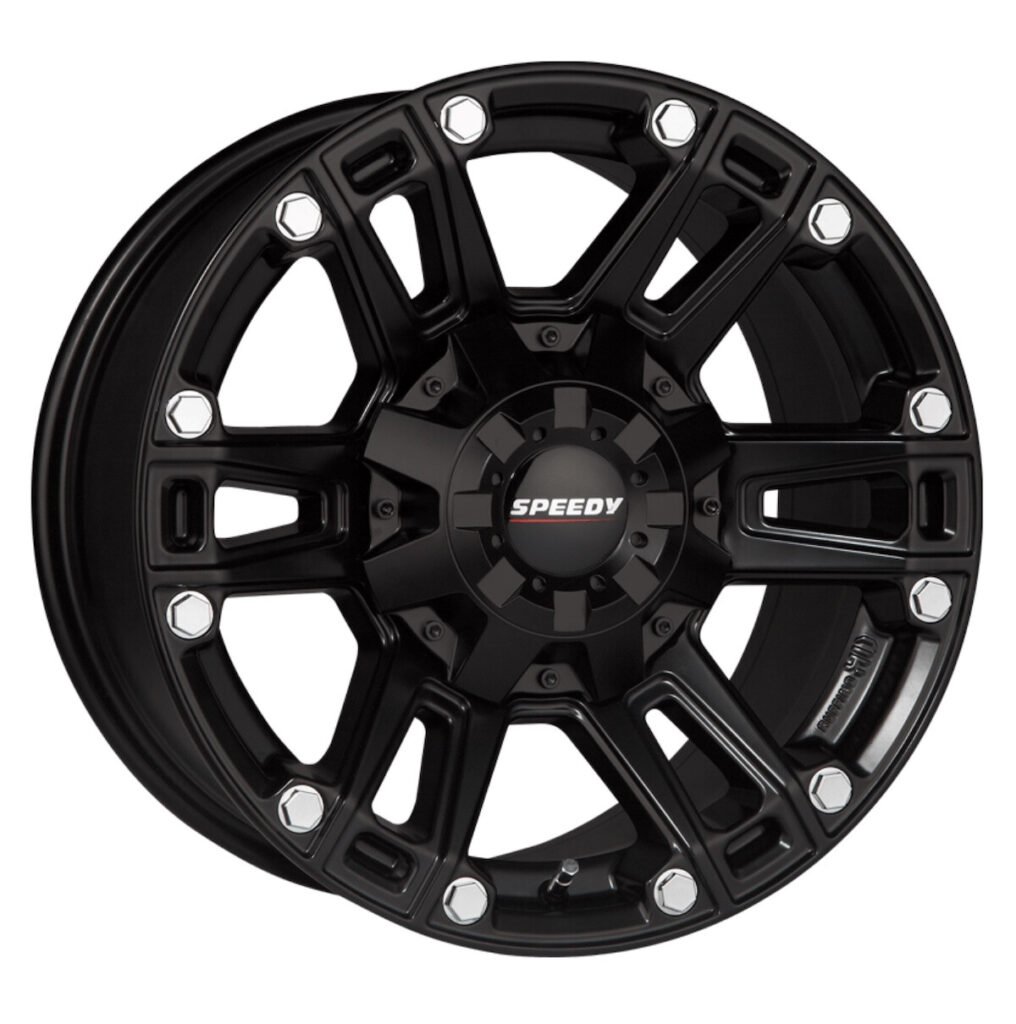
Specifications:
- Material: Aluminium alloy or steel
- Load rating: Depends on wheel type
- Bead restraint: Depends on wheel type
Things we like
- Custom machining available
- Large selection of styles
- Decent prices
Not so much
- Resale value
- Limited high-end features
- Material: Aluminium alloy or steel
- Load rating: Depends on wheel type
- Bead restraint: Depends on wheel type
Tyrepower
Tyrepower offers a solid selection of wheels specifically for the next-gen Ford Ranger, catering to both style and performance needs.
The line-up includes a variety of designs, whether you prefer a rugged off-road look or a sleek, modern vibe. The wheels are built to last, making them ideal for off-road driving.
You’ll find options in different sizes and offsets, allowing for larger tyres that improve traction and handling. Tyrepower also emphasises quality assurance, so you can trust these wheels will perform well and withstand the rigors of both on- and off-road adventures.
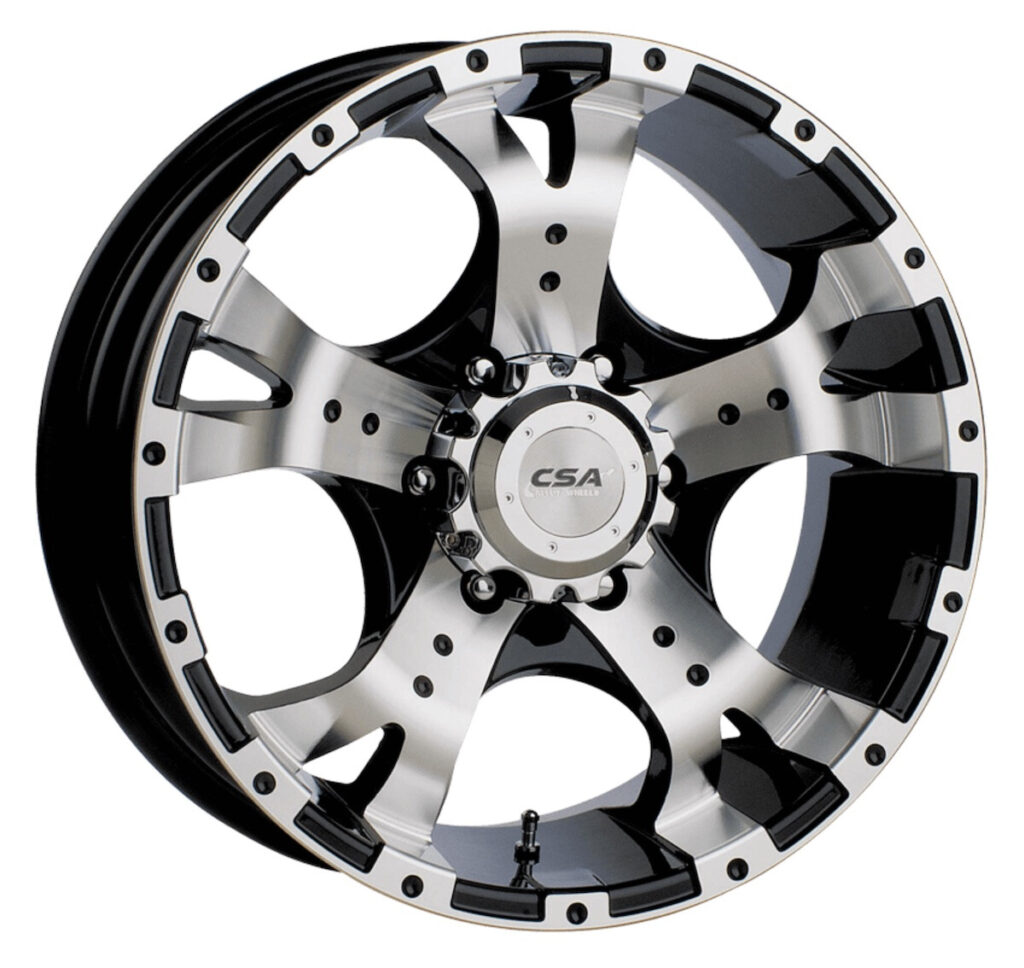
Specifications:
- Material: Aluminium alloy or steel
- Load rating: Depends on wheel type
- Bead restraint: Depends on wheel type
Things we like
- Wide selection of 4×4 tyres
- Wide selection of wheel brands
- Easy interface to find the right fit
Not so much
- Resale value
- Material: Aluminium alloy or steel
- Load rating: Depends on wheel type
- Bead restraint: Depends on wheel type
How we review products
4X4 Australia has been reviewing four-wheel drive vehicles and aftermarket products for more than 40 years.
When looking for the best accessories for your make and model of 4WD, there are some things essential to making sure you have the best off-roading experience. When we compare products, here are some of the things we consider:
- Warranty
- Build quality
- Value for money
- Time and ease to set-up/install
- Weight
- Fit and finish
- How well it gets the job done
- What materials they’re made from
- Corrosion/UV resistance
- Coatings
- Compatibility with other accessories
- Compliance with ADRs and vehicle safety systems
- Country of manufacture
- Load ratings, to determine what’s the best product across each price point.
Back to top ⬆️
Located just 2.5 hours from Brisbane, the 31,680-hectare Border Ranges National Park is World Heritage-listed for its range of rare and endangered wildlife and flora.
Plus, it has one road (Lions Road) that takes visitors through landscapes ranging from Australia’s largest area of protected sub-tropical rainforest to truly mountainous alpine terrain, and offers brilliant camping.
Accessed from the north via the hamlet of Tamrookum (south of Beaudesert), Lions Road initially crosses the narrow ‘join’ of the park’s west and east sections. It is well-worth checking out the short track branching off the right-hand side just inside this narrow section, as it leads 200m down to a picnic area that offers views over the Border Loop railway line.
This was an engineering marvel in itself; crews of workers shovelled, dug and exploded their way through the mountains, building a tunnel to join the NSW and Queensland ends of the rail line together more than 80 years ago.
Once back on Lions Road, you continue south parallel to the western border of the eastern section of the park, before turning left onto Wiangaree Forest Road and entering the park proper, where you pay your vehicle/visitor registration fees.
The popular Sheepstation Creek campground is just to the north of the entrance and provides access to a number of short bushwalks including the must-do Palm Forest Walk, a 2km loop along a long-disused bullock track to Brushbox Falls and then onto a large grove of the walk’s namesake bangalow palms. This campground’s sites are well away from each other and screened by natural vegetation, making it a great ‘base camp’ for maximising the weekend’s exploration of this park.
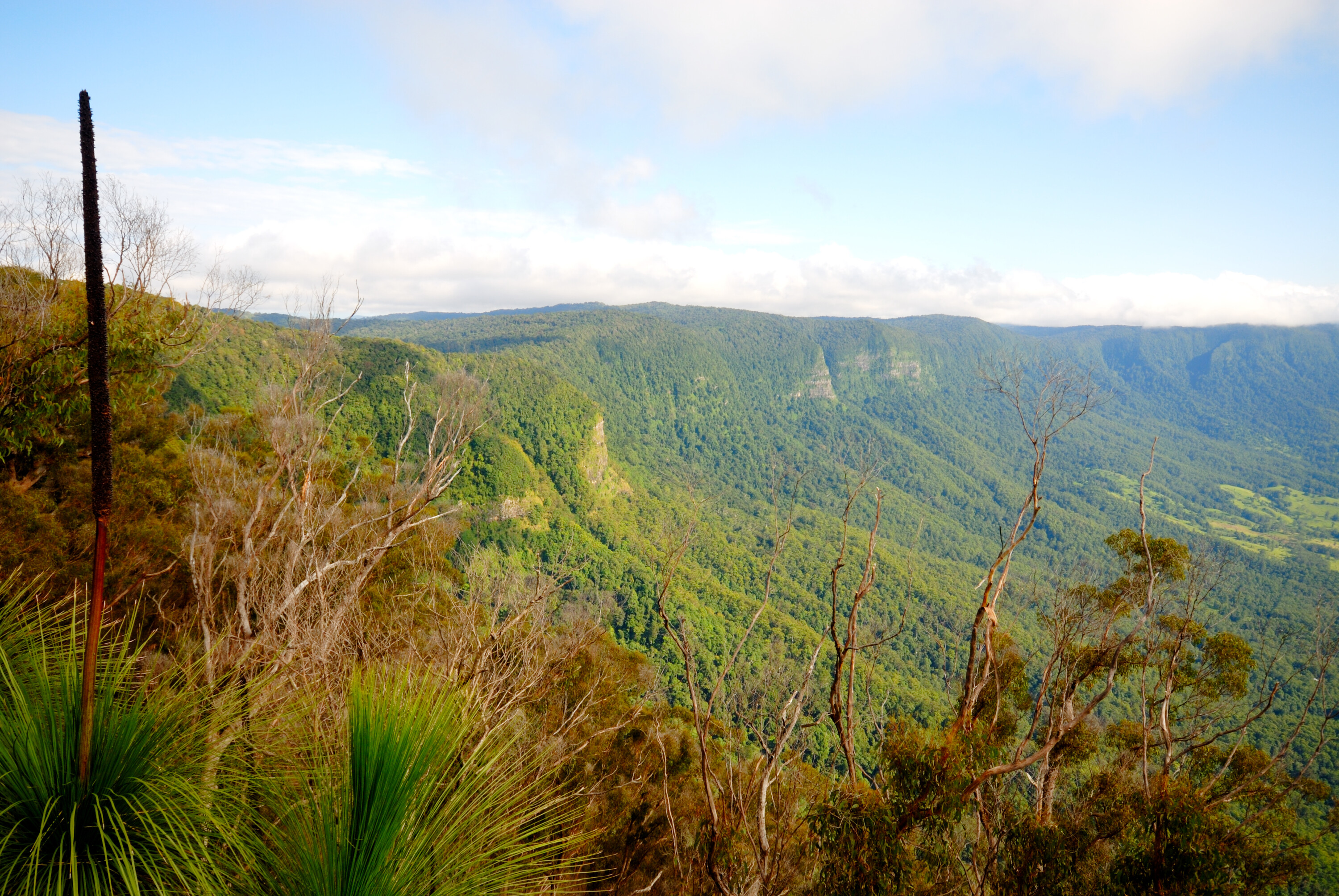
Of course, if you cannot walk that far, you can still reach this beautiful picnic area – take the vehicular side track just east of Forest Tops. This is a one-way loop that leads to the picnic area.
One last and much shorter walk worth your effort is the Red Cedar Loop, a 750-metre stroll to see one of the few – and massive – red cedar trees that escaped the timber industry. It is impressive.
The main track through the park – dubbed the Tweed Range Scenic Drive – is brilliant and joins Sheepstation Creek campground to Forest Tops before following the ever-higher escarpment as it winds eastward toward the aptly named Lookout Point. This is the first of a number of escarpment-based lookouts – others include The Pinnacle (reached via a short bushwalk) and, farther south, Blackbutt Lookout.
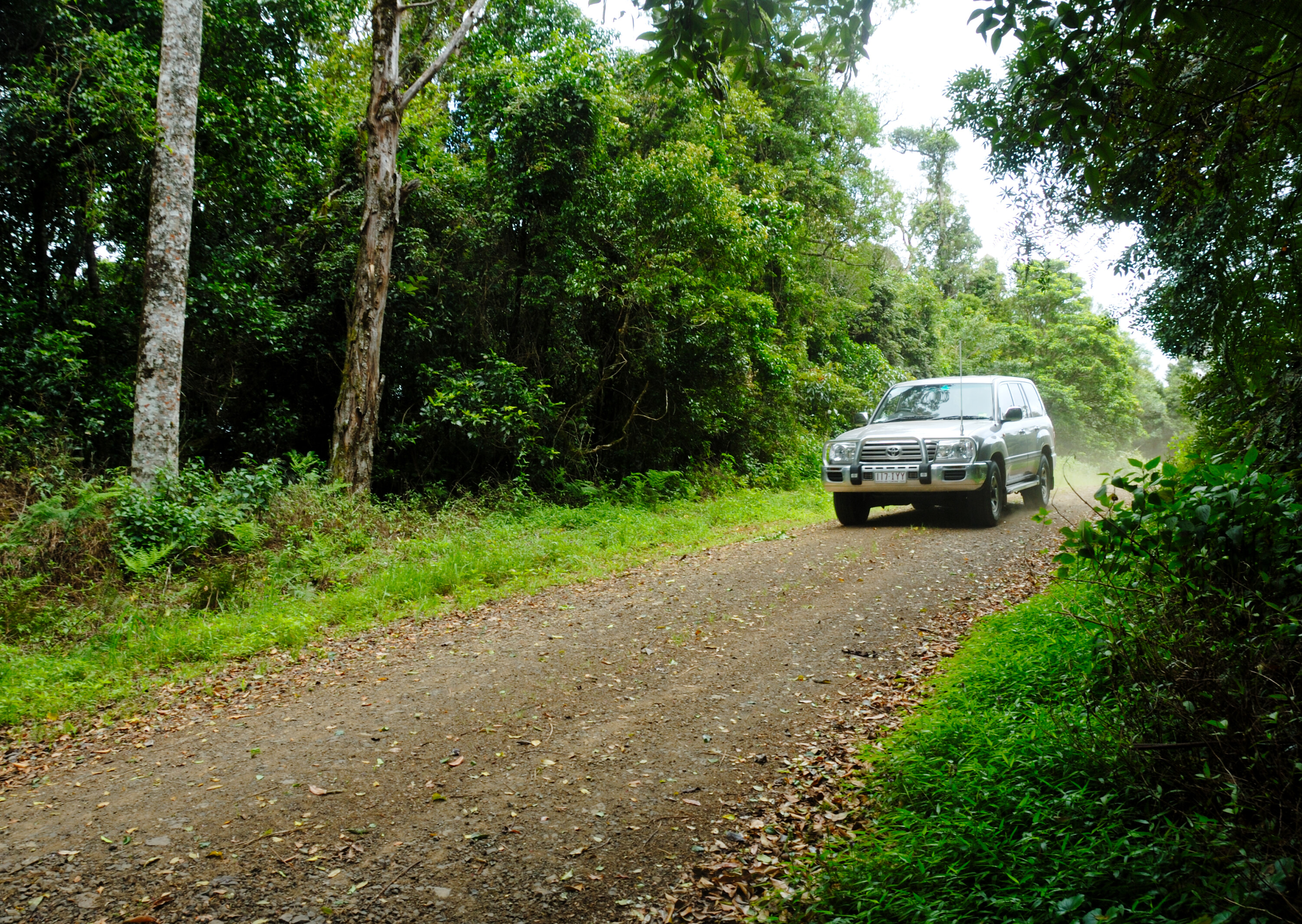
If you can, try and spend an early morning sunrise at The Pinnacle. This will give you what NSW National Parks rates as “the best views of the crater escarpment, Wollumbin-Mount Warning and the coast”. It sounds pretty epic to us.
There’s also one last short bushwalk here – the 4km Bar Mountain Circuit – that drops down to the escarpment edge, with views over Collins Creek, Mount Barney and Mount Lindesay.
Between the huge diversity of landscapes – including the ancient rainforest and steep escarpment – and plethora of wildlife to view (quolls, koalas, boobooks, Albert’s lyrebirds, tawny frogmouths, numerous reptiles and the black land mullet – actually a skink) plus a couple of great campgrounds, Border Ranges NP makes for a true ‘escape’ into its Lost World, and it is all only a few hours’ drive from the city.
This small (26,000-hectare) national park packs in plenty for a weekend away from Brisbane.
It’s a four-hour drive north of the capital, reached via a turnoff signposted Goodwood Road, near the town of Childers on the Bruce Highway. The park’s distance and location (hopefully) means you can visit without feeling cheek-to-jowl crowded, allowing you to fully enjoy the park’s many highlights.
And there are many of these – fishing is hugely popular here, owing to the fact you can fish from the beach, the Burrum River’s banks or from a boat on said river. Other popular activities include paddling (kayaking or canoeing the river, or sea kayaking offshore in Hervey Bay), bushwalking, bicycle riding and camping.
The park is comprised of four sections – Woodgate, Buxton, Burrum River and Kinkuna – with the town of Woodgate acting as a hub for visitors. Each of these sections offers visitors a different experience, belying the perceived ‘small’ stature of the park and explaining why it’s a must-visit.
Before entering Woodgate, access Heidkes Road on the right and you will come to Hoppy Larks day-use area, which has some picnic tables and is wheelchair-accessible and right on the Gregory River – there’s even a fishing platform to test your skills.
Continue along Heidkes Road and the track gets narrower, rougher and sandier, and you will have to negotiate a couple of creek crossings. There are also a number of fishing spots along the riverbank here, and it’s also a great chance to search for mudcrabs in the mangrove-lined banks.
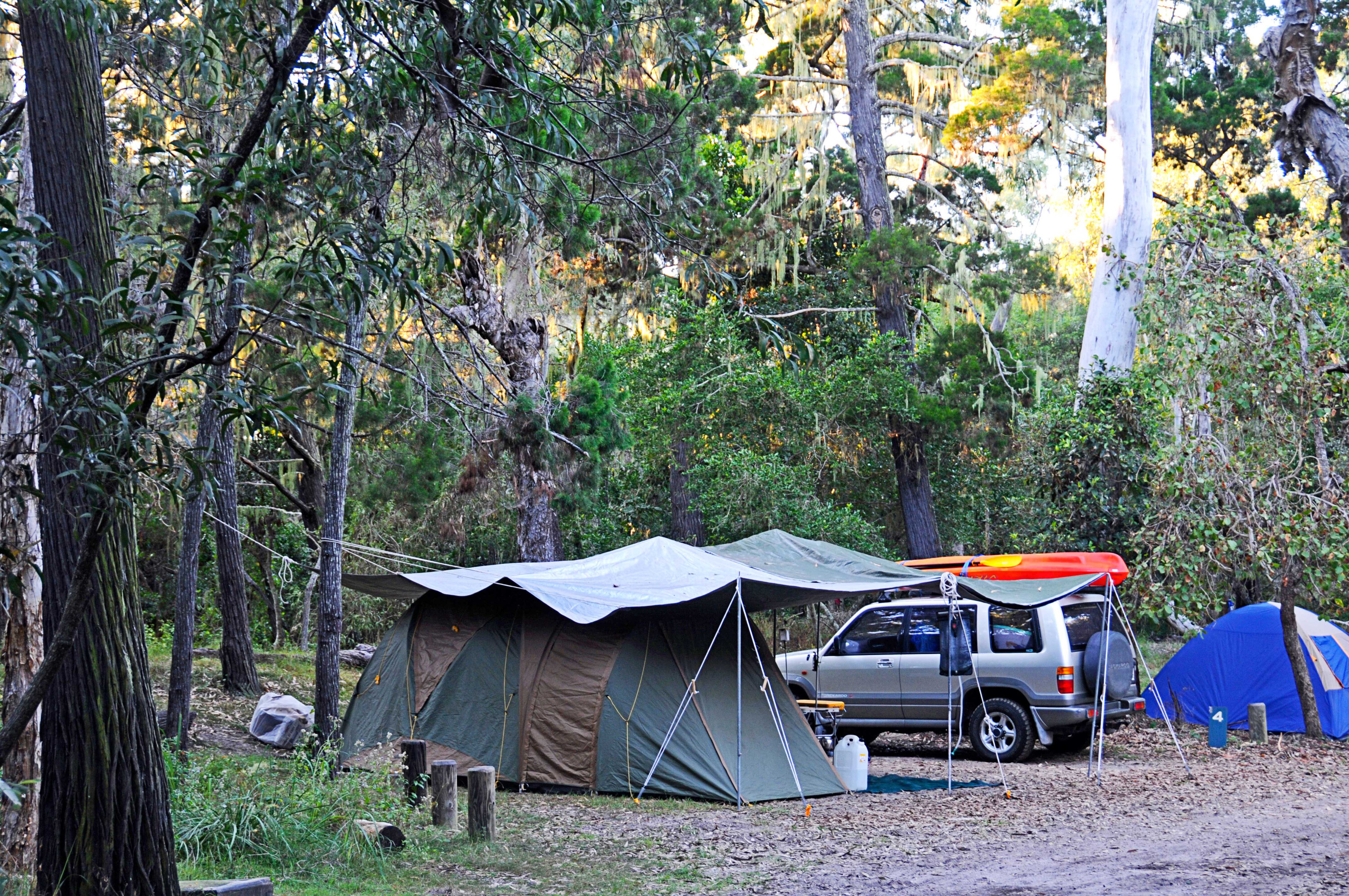
The terrain is magic, changing from dense bush to swamps, mangroves and then opening up to views of the confluence of the Burrum and Gregory rivers, with this large body of water dotted with the Gregory Islands. This track leads to Walkers Point fishing hamlet, before looping back north and around to the entrance to the 4×4-only Burrum Point campground, located next to Woodgate Beach. This campground includes showers, water and toilets, but you can’t have fires or generators here.
Woodgate Beach is ideal for not only 4×4 driving but also for swimming, owing to its sheltered orientation – perfect for those with young children or those who are less confident in the ocean.
For those keen on some true beach camping, the park’s Kinkuna Section, to the north of Woodgate, is ideal. This section is 4×4-only access (some tracks can be closed in wet weather) with Woppis Road Beach the entrance to the southern part of this section. From here you can follow Beach Road through swampy terrain to the signposted Kinkuna camping zone on the beach.
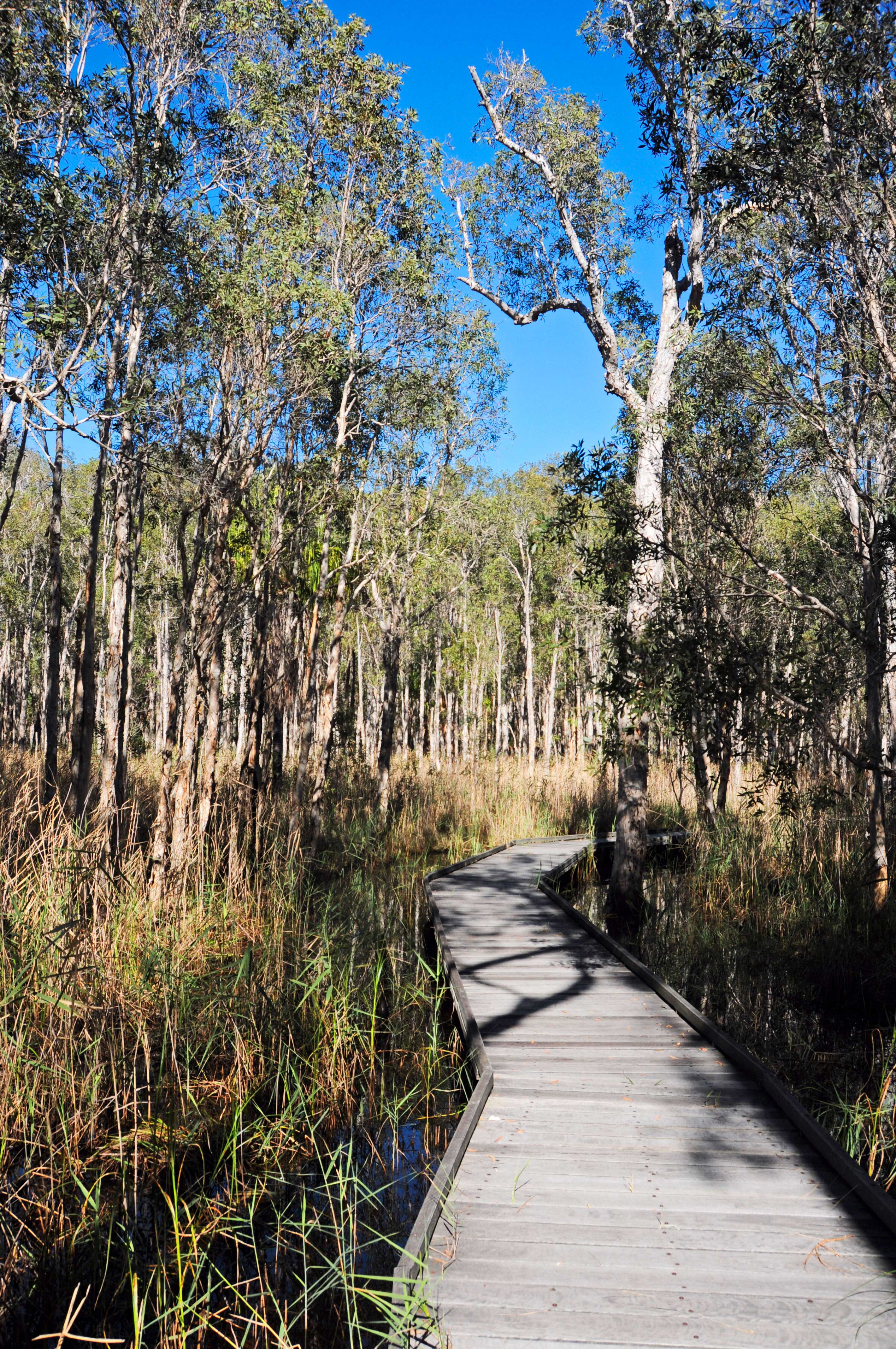
For day visitors, Theodolite Creek Track provides access to the same-named day-use area and is a great place to set off for a waterborne exploration of the waterways in your boat/canoe/kayak. You can also swim here or try and snare an elusive ‘muddie’ (mud crab) for dinner.
The Buxton section of the park in the southwest has no facilities at this time, but it is very popular with both birdwatchers and photographers, owing to the proliferation of birdlife in this part of the park.
Burrum River Section offers access to the Burrum River for canoes/kayaks and boats, plus the small village of Burrum Heads has supplies and facilities. To access this section you have to loop back out of the park and come in from farther south, via the township of Howard, off the Bruce Highway.
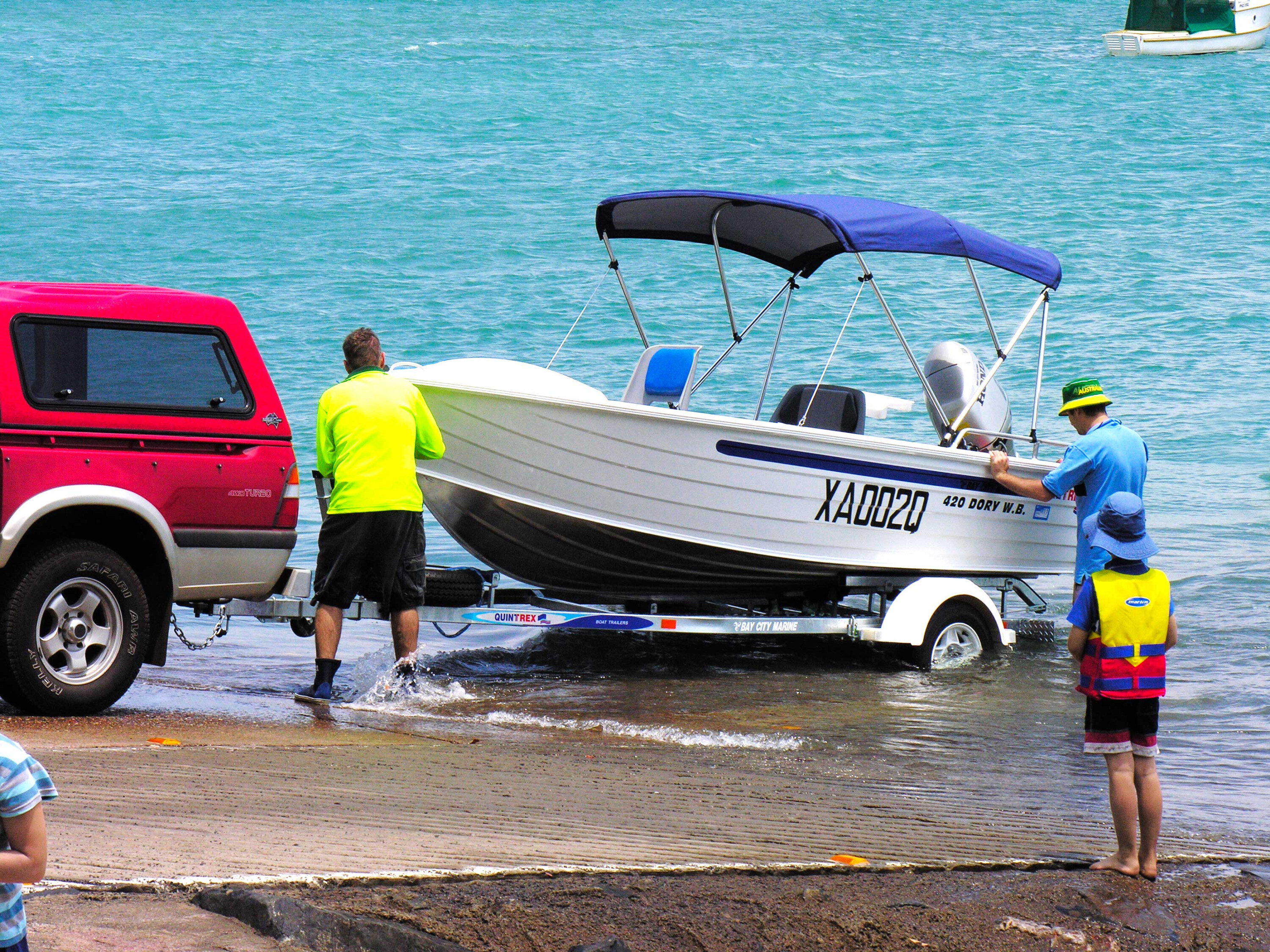
Another highlight of this park are wildlife encounters. Green turtles (and loggerheads) nest on Woodgate Beach from November to February, with the eggs hatching at the end of November through to March – an amazing sight. As is the whale migration, with these marine giants spotted off the coast here from August until the end of October.
Punching above its weight, you say? Burrum Coast National Park most certainly does.
Cooloola Recreation Area (RA) is often viewed as a ‘smaller sibling’ to its more famous counterpart (K’gari) in Great Sandy NP. However, it is a brilliant touring and camping destination in its own right, located just three hours’ drive north of Brisbane.
Accessed from the south via a vehicular ferry near Tewantin that takes you across the Noosa River (the RA is just north of the Sunshine Coast tourist mecca of the same name), Cooloola RA offers a brilliant weekend (or longer) escape from the city, with its mix of beach driving, loads of bushwalking tracks, inland lakes that host numerous native birdlife (for the birdwatchers among us; there has been up to 350 species recorded here), beach and river fishing, paddling (canoe or kayak) and a spread of sublime campsites that range from right on the beach to nestled beside Noosa River’s banks.
For a weekend adventure we recommend starting at the southern end of the RA, with access via the aforementioned ferry. Don’t forget to buy your vehicle access permit and camping permits from the Great Sandy Information Centre, near the Noosa River ferry, before you get on the ferry.
Once you’re in the RA you will soon be at the first access track that leads to Teewah Beach. This beach runs the full length of the RA’s eastern border and is a great drive, with one caveat: be sure to check tide times and air-down your tyres before venturing onto the sand.
Surprisingly (or maybe not), Teewah Beach still claims a few vehicles each year, simply due to drivers not being aware of tide times – or becoming bogged at the turn of the tide. Either way, it’s easy to avoid an act of stupidity by simply checking tide times as part of your trip prep. Lecture over, it’s time to continue north – albeit with some caution.
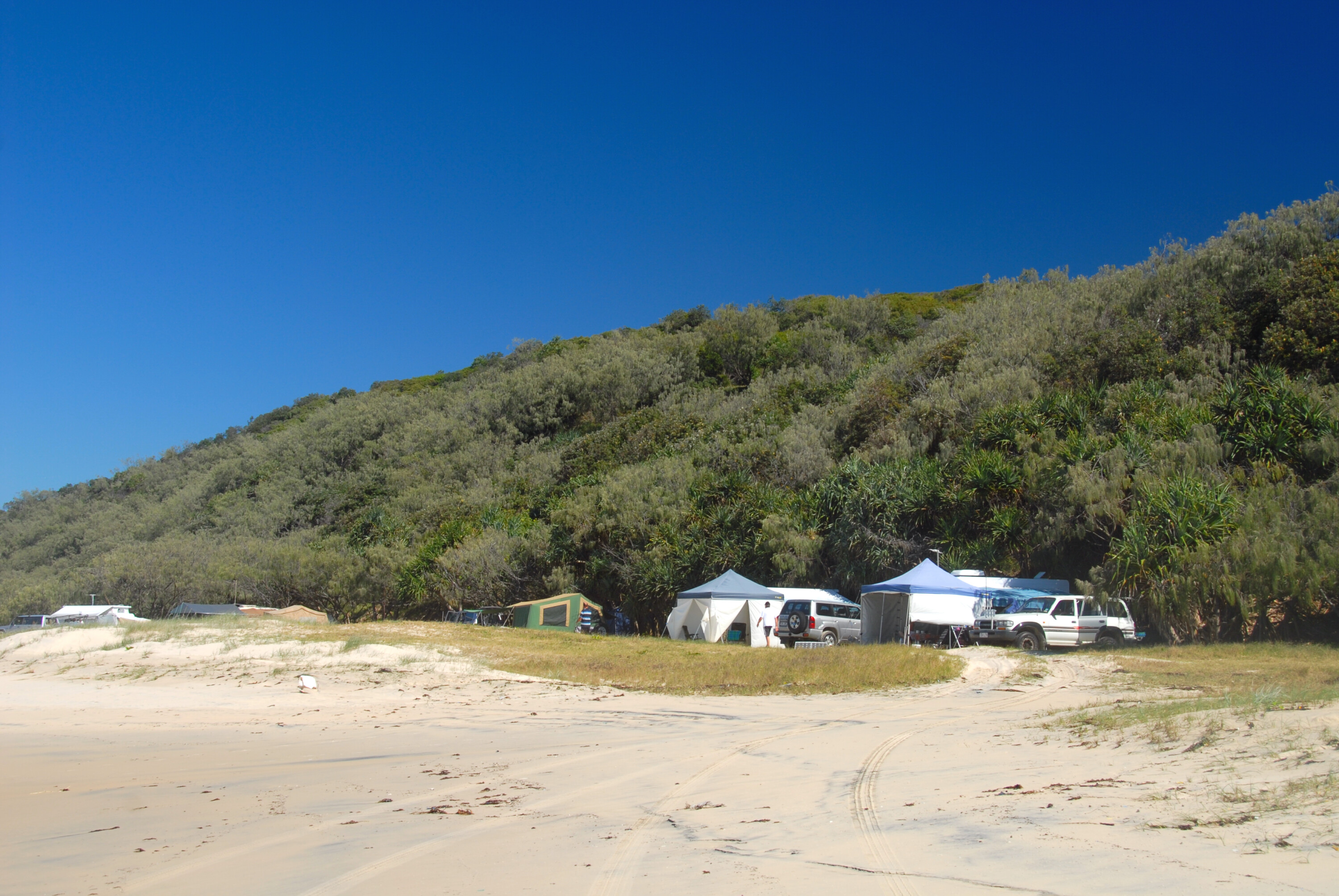
The fact that fishing is so popular here means you’re going to encounter any number of anglers (young and old) on the beach, so it pays to drive carefully and keep an eye out just in case.
Another reason Teewah Beach is so popular is the fact you can camp right on the beach; once you pass the 20km No Camping zone, the next 15km or so allows near-free reign when it comes to setting up camp.
Use common sense and camp back from the beach a bit and you’ll be rewarded with the chance to have a campfire (fire warnings permitted; and you need to bring firewood) and also wake up to one of this country’s best sunrises each morning – not a bad start to the day while you cook brekky. Not bad at all.
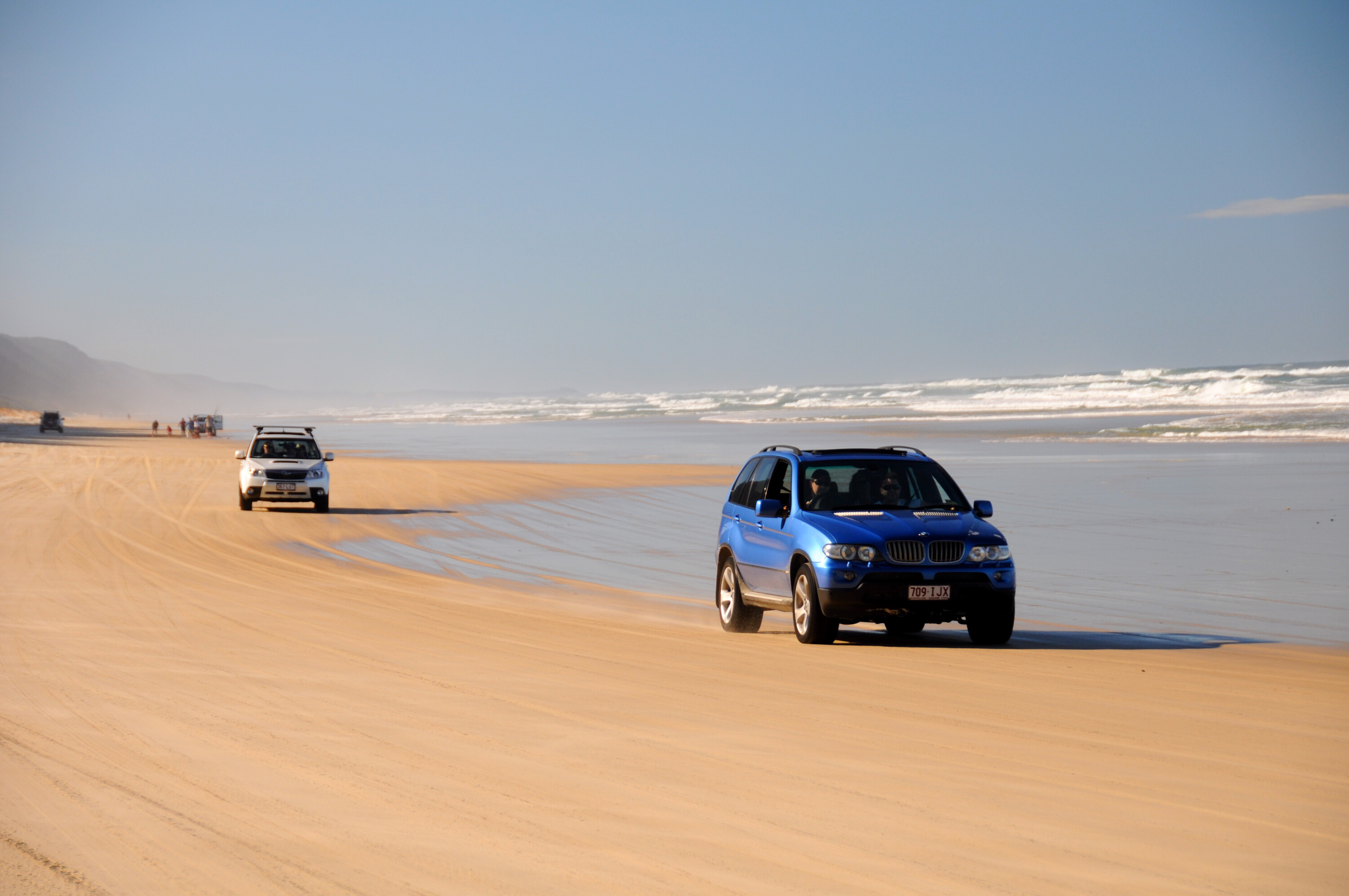
If you want a little bit more in regards to amenities, the Freshwater campground is the better option. With 59 sites and a toilet/shower block that even has hot water (you need to use $1 coins to get hot water, but it’s a cheap luxury!), this campground is excellent and is only 500m from the beach.
The Freshwater 4WD Track nearby runs for 15km and is a nice touring option for an hour or so, taking you past Freshwater Lake (one of the many freshwater lakes found in the RA) and linking onto Rainbow Beach Road, if you want to head to that northern village for supplies.
For off-roaders looking for challenging driving, you can opt to turn off Teewah Beach at Kings Bore Track. This 40km circuit is actually part of the RA’s fire management track network, but makes for a great four- to five-hour adventure as you negotiate the sandy track surface past huge eucalypts and the historical Camp Milo (this was part of the timber industry’s tramway built here in the late 1800s to assist in hauling timber out).
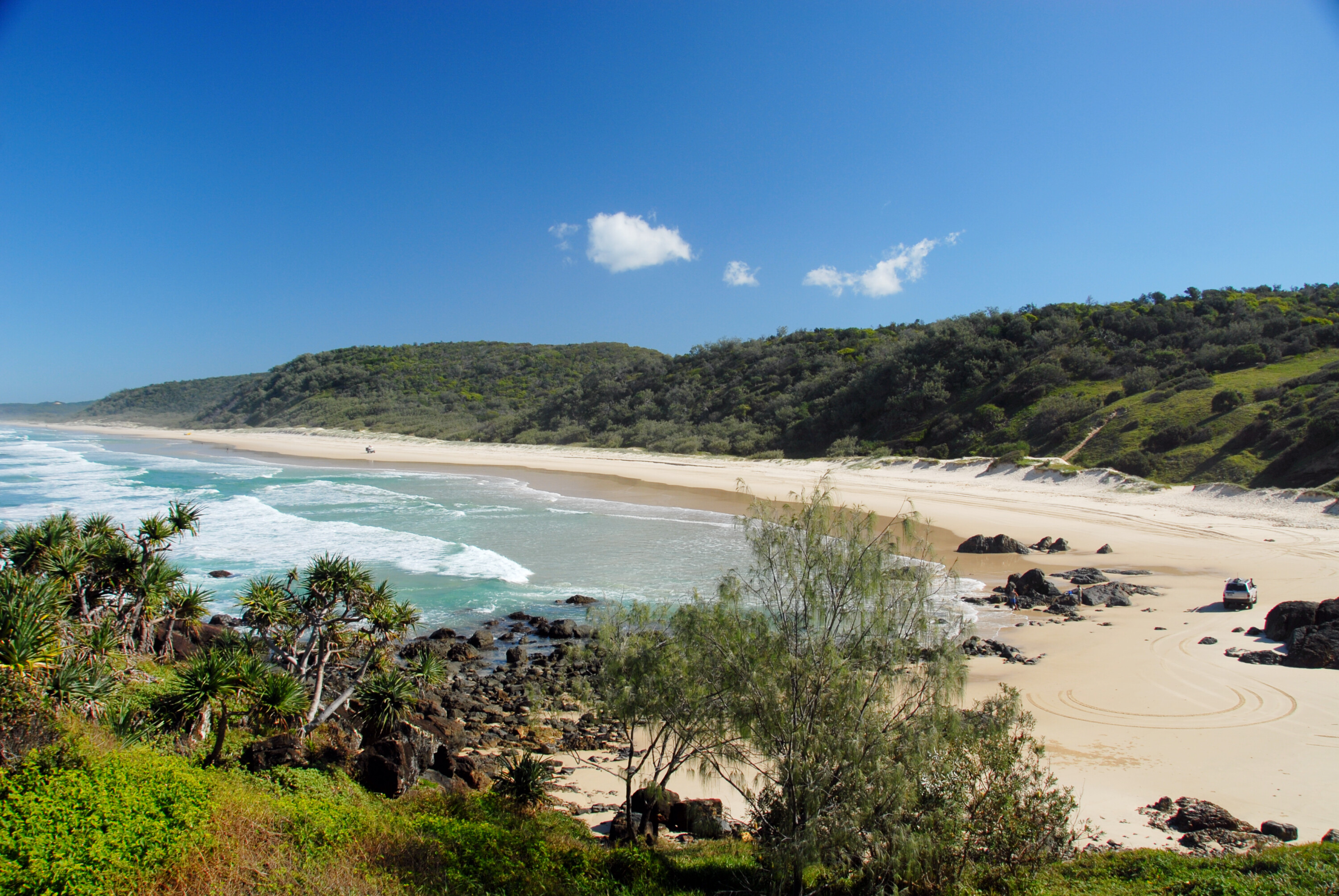
Another of the many drives here is the Cooloola Beach Drive, tracking along the northern coastline of the RA from the village of Rainbow Beach in the north and allowing tourers to access the walk to the historic Double Island Point Lighthouse – a must-do on your visit here. Be sure to do this drive at low tide and be careful negotiating Mudio Rocks near the village at the beginning of the drive. And don’t forget to check out the multi-coloured sands you find here.
Another shorter off-road sojourn is the Harry’s Hut Road 4WD track, back down in the RA’s southern section. Harry’s Hut is an old timber workers’ shelter but is actually named after a Cooroy pharmacist, Harry Springs, who used to fish and camp here and bought the hut in the 1960s.
As you can see, for a relatively ‘small’ Recreation Area, Cooloola packs a mighty big punch, with plenty more to occupy those who opt to stay longer, including longer bushwalks, such as the Cooloola Great Walk (a 102km four-day journey, staying at walker-only camps), canoe/kayak trips along the Noosa River, and, of course, even more fishing. Yeah, we reckon it’d be hard to leave, too.
Want a 4×4 getaway as close as possible to Brissy? Well, at 40km from the centre of Brisbane, Moreton Island fits that bill.
The location isn’t its only appeal, as Moreton Island’s 18,000 hectares contain plenty for a weekend escape, whether you’re a swimmer (the island’s lakes make great swimming spots; confine your surf/beach swimming to the area at Main Beach that has surf lifesaving patrols), diver, angler, camper, bushwalker or a combo of all of these (plus, there’s activities such as sand tobogganing on the huge dunes).
Add in the fact that all the ‘roads’ on the island are sand (there are no sealed-surface routes here; the sand here is often very soft) and you’ve got a brilliant overnight or weekend off-road touring destination that is, quite literally, right on the city’s doorstep.
The island is reached via the Micat (Moreton Island Adventures) ferry that runs daily from Brisbane (the Port of Brisbane, to be exact) to the island’s central western coastline (The Wrecks). From here it’s onto the beach.
As expected, the island’s beach-driving conditions are governed heavily by both the tides and the weather in general; big storms can wash away large sections of beach, so it pays to check online at the Queensland Department of National Parks for the latest track/beach conditions, and also to book your vehicle access and camping permits.
Our tip for a worry-free beach-driving experience is to make sure your planned beach driving happens around two hours either side of low tide only – there’d be nothing worse than joining the reasonably long list of vehicles Moreton’s beaches have claimed.
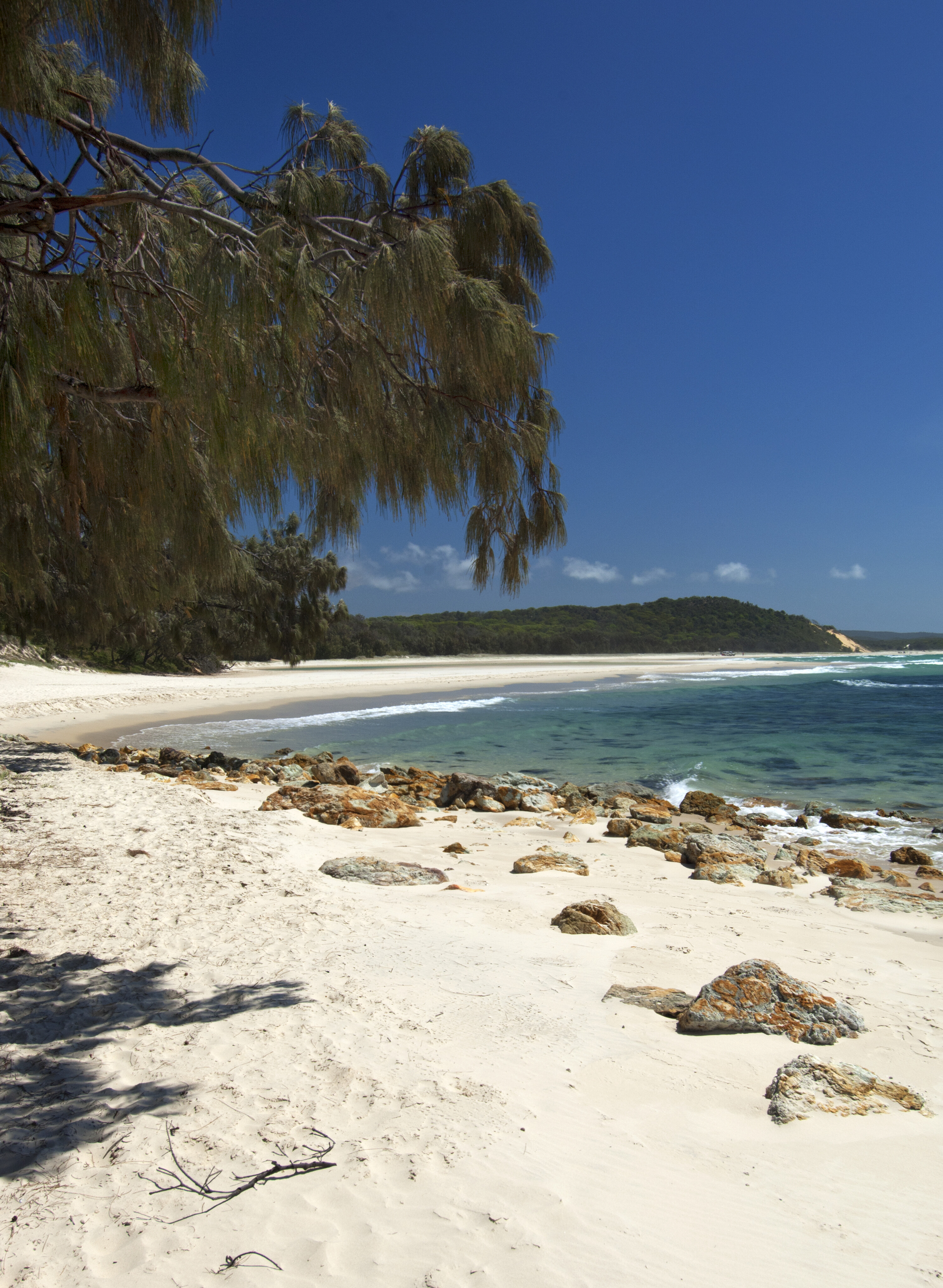
The island has five campgrounds, all of which have toilets, showers and bore water (make sure you treat or boil this water before consumption or use with cooking). There are a further five camping ‘zones’ (beach-based, mainly). Campfires are not permitted on the beaches here (you can have fires in designated fire pits at campgrounds, but you will need to bring your own wood in).
For anglers, you need to be aware that parts of Moreton Island’s coastline are encompassed inside the Moreton Bay Marine National Park, so fishing is not allowed in those areas.
In terms of an overnight or weekend drive/camping adventure, we’d head north once the ferry has deposited you and your rig at The Wrecks. You have the option here (if the tide dictates) to take the high tide tracks at Cowan Cowan and Cravens Creek and then return to the beach for the rest of the trip north to Bulwer and the pretty Comboyuro Point campground.
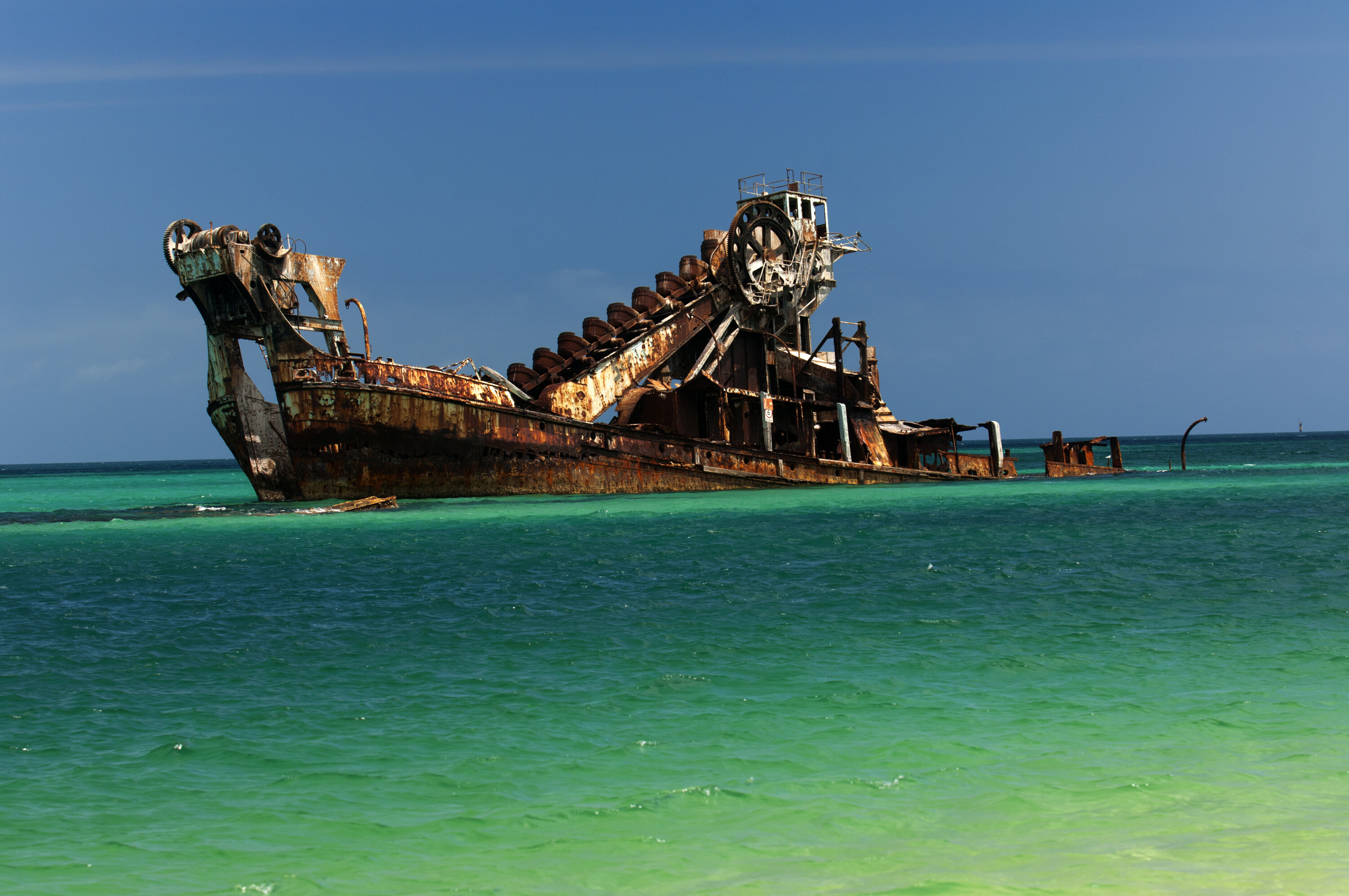
The Bulwer North Point Road (sand) takes you across the island’s northern section, passing some beach access tracks along the way (as well as the must-visit Five Hills Lookout, a viewpoint atop a huge sand dune that provides a vista that takes in Heath Island) before you reach two potential overnight stays: Yellow Patch and, just a bit farther along, North Point campgrounds and the island’s famous historic Cape Moreton Lighthouse.
For those towing camper trailers, the best option is to take the Bulwer Blue Lagoon Road to the Blue Lagoon campground and to access the east coast. Time your visit for whale-watching season (June to late October) and you’ll easily spot those big boppers from here.
The next day’s drive down the eastern coastline of Moreton is awesome; there are more camping opportunities once you’re south of Spitfire Creek, but we’d continue on to beautiful Blue Lagoon, with its nice campground and fantastic swimming. This lake is the island’s biggest (and often most popular), but it’s well worth a stopover.
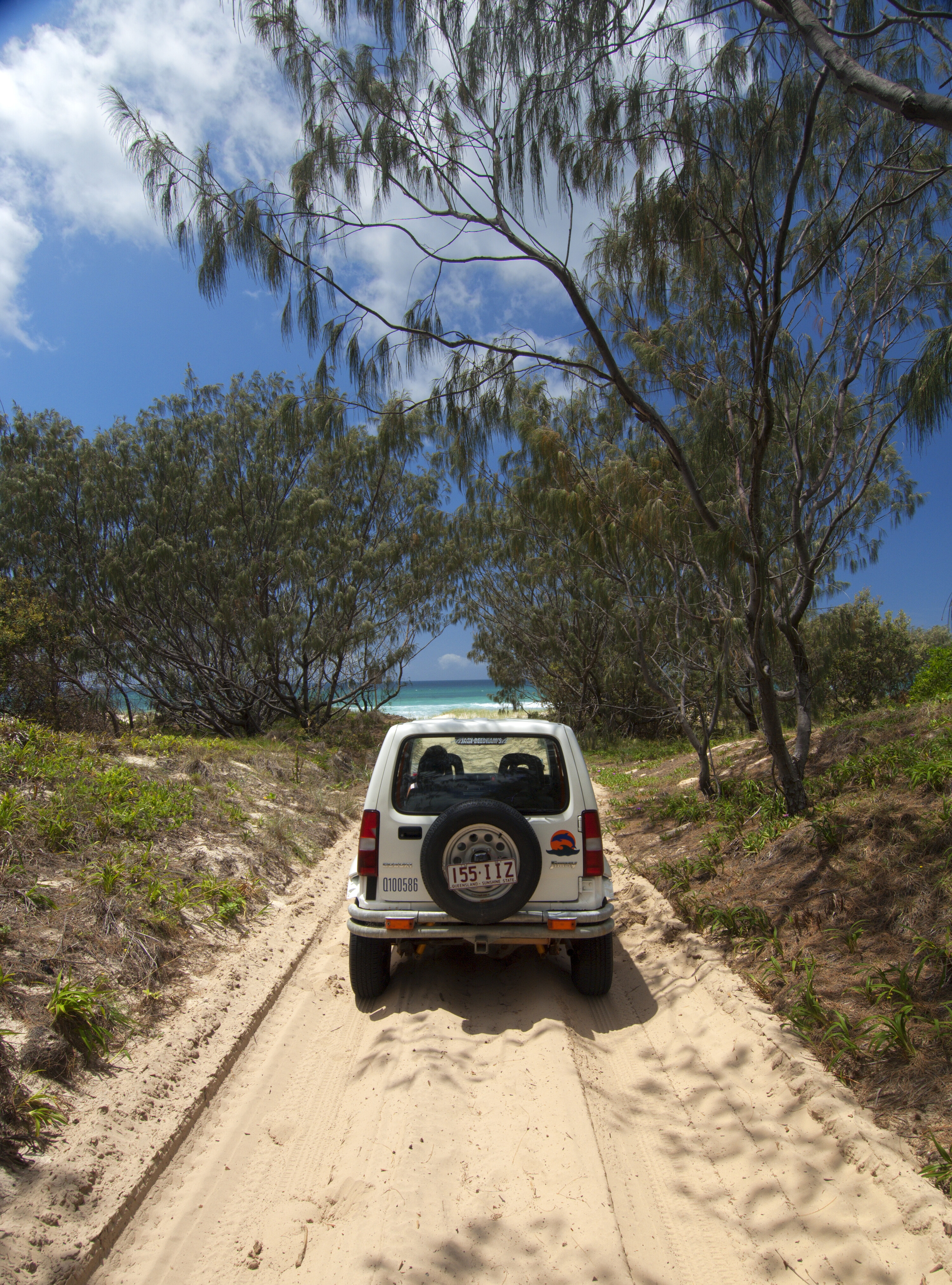
Also worth a pause as you continue south along this eastern coastline is the Rous Battery site. This World War II defence site is now in ruins, but it offers a great chance to get the young’uns out of the vehicle for a bit of exploration as they search for the remnants of the structure.
For even more family entertainment – whether young or old – the Little Sandhills and, a couple of kays south of these, the Big Sandhills offer both great views from their lofty heights (80m-plus) and the chance to try an activity synonymous with Moreton: sand tobogganing.
The island’s southernmost point includes Mirapool Lagoon (a top spot for birdwatchers) and then, on the southwestern side, Kooringal, which is the landing point for the ferry to North Stradbroke Island.
It is here you need to make a decision: the beach north of Kooringal is far more challenging (and often impassable) so you can opt to backtrack and take the eastern beach-side drive again up to the Middle Track turn-off, which takes you back overland to The Wrecks and the ferry back to Brissy. Or, you can jump on the ferry back at Kooringal to another escape.
Straddie, as it’s colloquially known, is similar to neighbouring Moreton Island when it comes to what’s on offer for a weekend away from Brisbane.
The island is accessed via a ferry from Cleveland on the mainland, or by the northern tip from Moreton by ferry, as mentioned previously. The island allows for numerous activities including swimming, surfing, fishing (outside the marine park boundaries), beach driving, kayaking, camping and even golf (yep, the island has a golf course).
As with Moreton, you will need to buy a beach access permit for Straddie (this is valid for 12 months and available from Minjerribah camping) and be aware there is no four-wheel drive access to the island’s beaches an hour either side of high tide (you will be fined if caught doing this). Naree Budjong Djara National Park also covers parts of the island, and there are restrictions on vehicular access to some sites, such as Blue Lake, which requires a 5km return walk to check out.
The roads on the island are a mix of sealed bitumen and unsealed (sandy) 4×4-only tracks. The ferry from Cleveland lands at the ‘capital’ of Dunwich, which provides the opportunity to grab last-minute supplies – and an island map – before setting off.
Our preferred route begins by heading north along Dickson Way; although, a nice and short side-trip option is to drive east along Tazi Road for a brief circuit of Brown Lake. Just be aware this lake circuit is suited to high-clearance off-roaders and can be quite muddy/boggy after rain.
For those heading north, looking for a nice, easy family trip, stick to East Coast Road from Dunwich, passing through the northern section of Naree Budjong Djara NP before veering left (north) toward the caravan park at Amity Point (where the Moreton Island ferry lands).
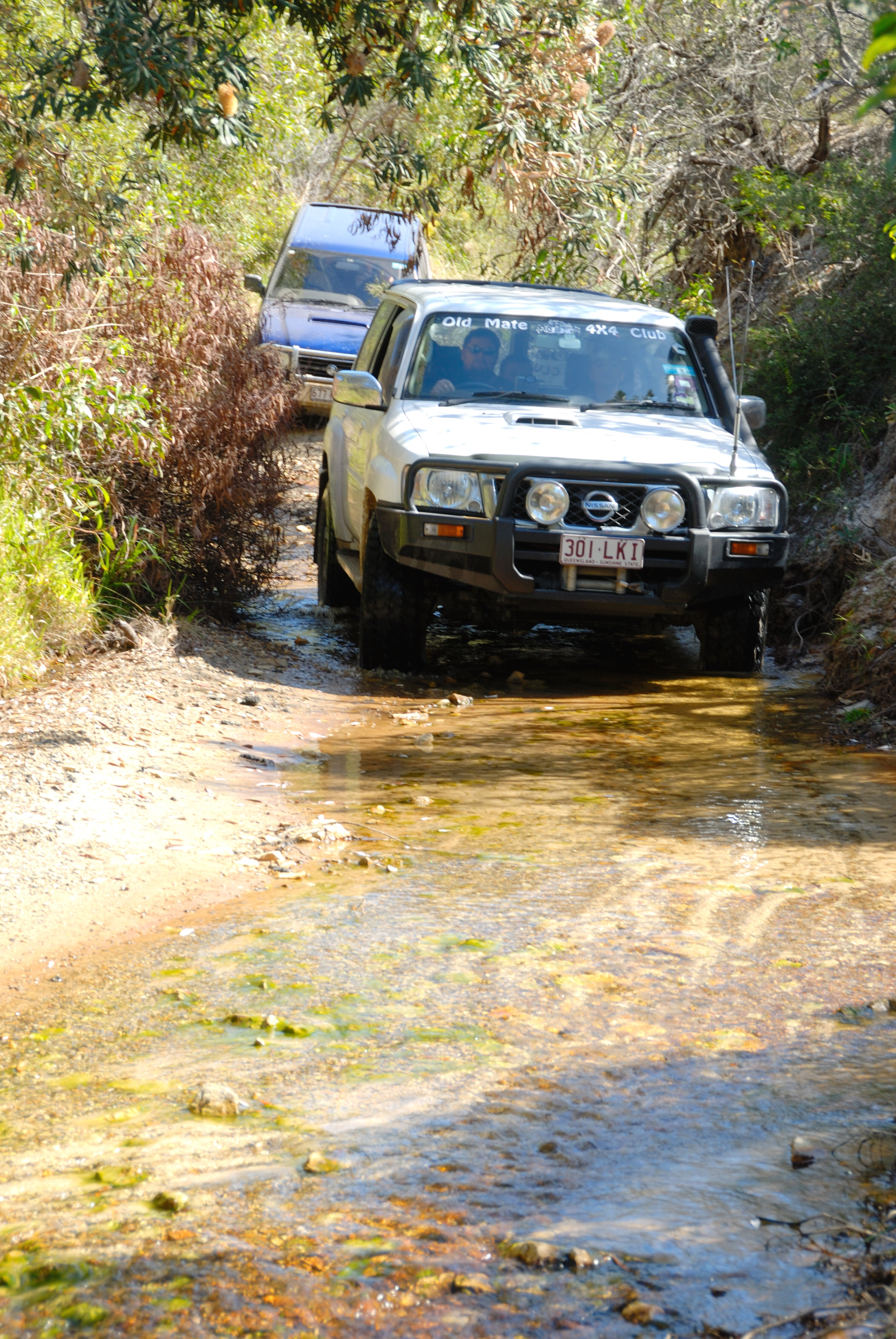
Or, preferably, turn right and settle in at one of the excellent campsites dotted along Flinders Beach that runs along the island’s northern coastline. The beach driving along Flinders is fantastic, but be aware this is a popular area and there will be a fair number of pedestrians on the beach (and anglers testing the waters), so take it easy.
This beach drive leads to an exit near Adder Rock before the tiny settlement of Point Lookout (fuel and food/supplies here). Then, it’s on to the big one – the 24km journey south along Main Beach to the end-point (literally) at Jumpinpin Channel (aka The Pin), which is the channel separating the north island from South Straddie.
You can opt to camp along Main Beach at any number of campsites, or you can retrace your tracks north and turn west onto the sealed Tazi Road (this will take you past the Blue Lake walk carpark) and return to Dunwich, taking in Brown Lake if you didn’t visit it at the start.
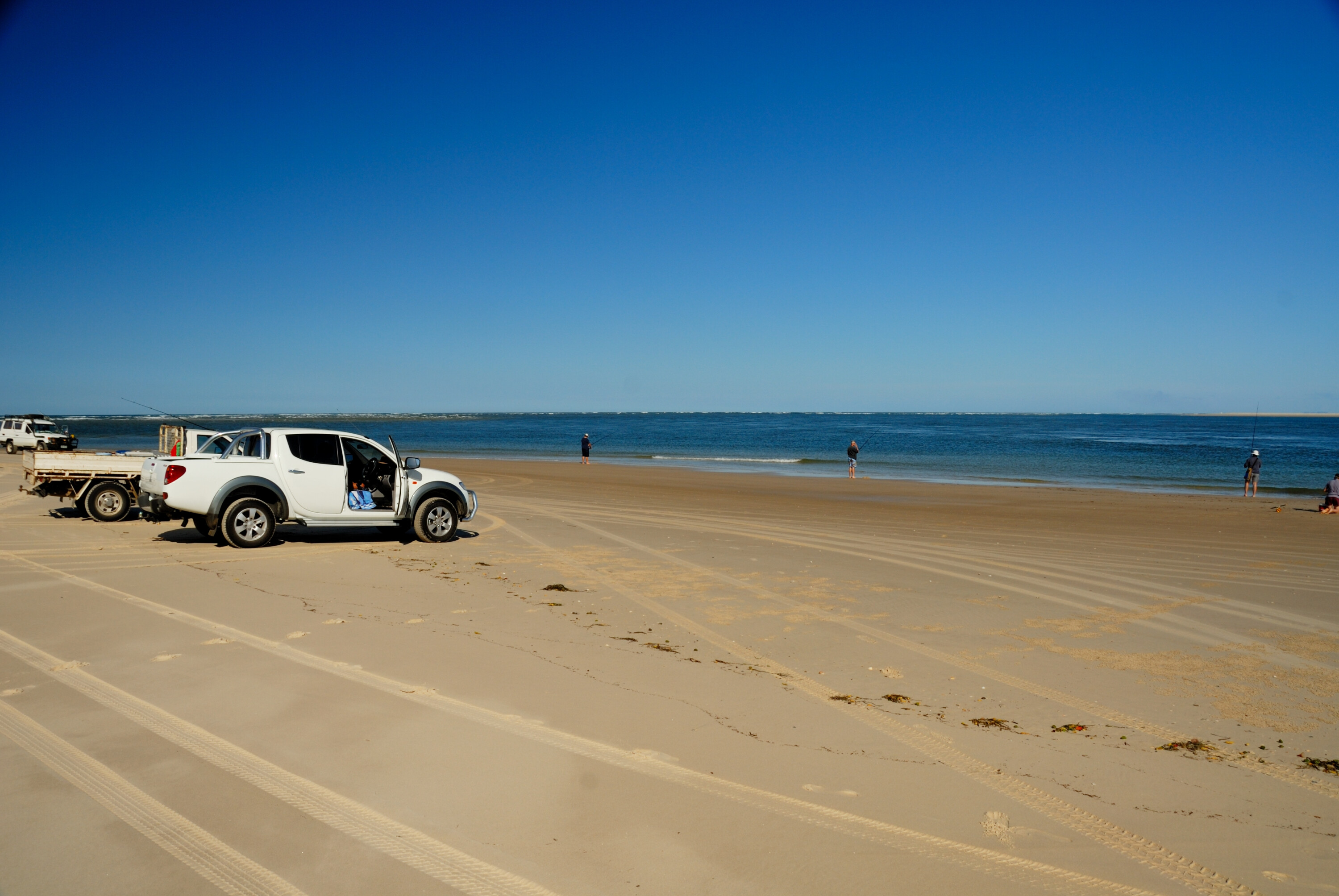
A far more challenging route on the island is to initially head north from Dunwich along the East Coast Road/Dickson Way and turn right just past the Beehive Road turnoff, onto Tripod Track. This is a cracker of a drive and leads you through the island’s densely vegetated interior (also stop off at Tripod Lookout for great views over the island); before you descend a very narrow track, briefly rejoin bitumen on Tazi Road, and then turn onto Fishermans Road.
Drive north on this until you see the turnoff to Keyhole Lakes Track on the left. This tough side trip (thanks to the many water crossings; it’s highly recommended to only attempt this with a vehicle fitted with a snorkel and to check depth beforehand) is rewarding if you have the necessary skills and equipment (a water-crossing tarp isn’t a bad idea, either).
These remote bodies of water offer great paddling (canoe/kayak) and fishing, and there are picnic tables near a couple of the lakes. Here, thanks to the tough access, you’ll gain that sense of isolation that is harder to find on the rest of the island.
The Australian on-sale date for the BYD Shark 6 has been confirmed, with the plug-in hybrid ute available to order from October 29, 2024.
To be released in Australia in partnership with BYD’s exclusive Australian distributor, EVDirect, the Shark has been extensively tested on local soil for the past six months. This fine-tuning has ensured it should be able to match it with Australia’s range of relentless terrain.
“The Shark 6 marks a really exciting moment for the brand as Australia’s first plug-in hybrid ute that’s been specifically made and tested on our roads, for our roads. It’s built for Australian demands with its spacious interior and sporty drive, showcasing versatility to suit adventurers, tradies and of course families,” said David Smitherman, EVDirect CEO.
“We believe it’s a true category creator with its luxury design and full suite of custom accessories. Importantly, it has incredibly low ongoing running costs as it toggles between pure EV and Hybrid formats, which in today’s economic climate is a genuine consideration for customers,” he added.
The BYD Shark is equipped with BYD’s DM-O (dual-mode off-road) technology, which pairs a 170kW 1.5-litre four-cylinder turbocharged petrol engine with dual electric motors – 170kW/310Nm on the front axle, and 150kW/340Nm on the rear axle – for a combined power output of 320kW.
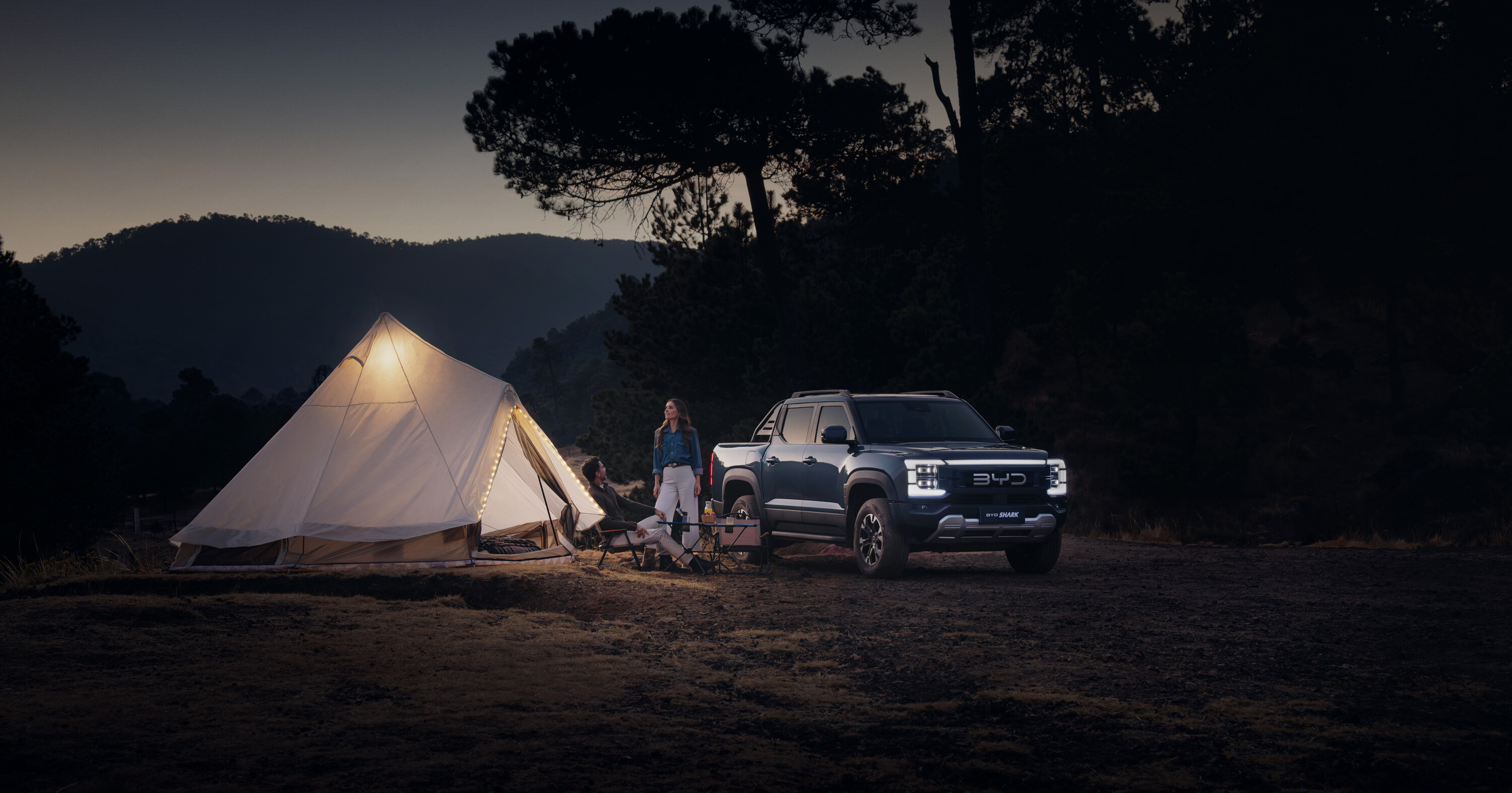
The Shark runs on independent coil-spring rear suspension and features three terrain modes – Sand, Mud and Snow – as well as instant torque distribution between the front and rear wheels. BYD claims the Shark 6 will have a combined range of approximately 800km.
Notable interior kit includes a 12.8-inch infotainment system, Apple CarPlay and Android Auto, a 10.25-inch digital instrument cluster, a 360-degree camera system, a wireless phone charger, a head-up display, and the use of an NFC key card.
Full specs and pricing is yet to be determined and will be revealed over the coming weeks, but here’s everything we know so far!
A reliable power source is essential for 4×4 enthusiasts, and a dual-battery system is an excellent way to ensure your Ranger has enough power for every adventure.
Dual-battery systems help to extend the lifespan of your battery and electronics, making it a worthwhile investment for any serious off-roader. The following products are intended as a starting point, to give you an idea of what’s available. We’ve included information on Ford Australia’s genuine accessories, in case you’d prefer to stick to OEM.
What it is: A second battery system and associated hardware, to run accessories such as fridges the battery and charging systems.
Why you need it: Fridges, radios, laptops and other accessories can significantly drain a battery, leaving insufficient power to start the car. A car battery isn’t designed for powering appliances long-term; it’s designed to deliver a lot of power for just a moment to start the car. So the best thing to do is to create a second electrical system for accessories.
Buying tips: The Ranger is not unique or special compared to other modern vehicles, so any auto electrician should be able to create a dual-battery system. We have listed below some of the Ranger NG specific kits, especially trays to hold the batteries, as that’s the part which tends to be unique to a given vehicle.
Lithium: For the battery itself you may also consider a lithium battery as the second battery; compared to the older AGM design, lithiums are much lighter, smaller and can be discharged lower than the AGMs. However, they are much more expensive.
Custom Lithium battery kit
These custom lithium batteries are designed for the Ford Ranger (2015-2024) including PX2, PX3, and next-gen RA models. They’re compatible with models featuring Premium Audio. Available in 100Ah, 150Ah, or 200Ah capacities, the system offers a no-drill solution that fits your vehicle without needing an additional battery tray.
If a Victron battery monitor is selected, it will be pre-mounted and configured for easy use. You can also customise your setup with additional components to charge the battery and power your adventure.
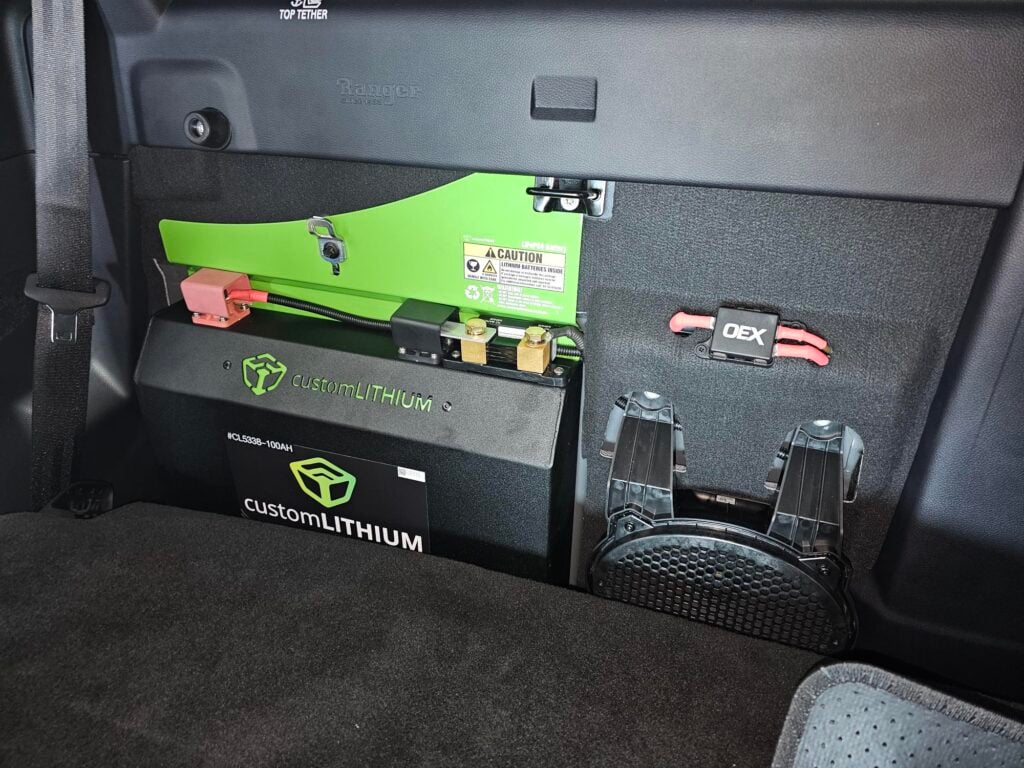
Specifications:
- Battery tray: Yes
- Charger: Option
- Battery: 100Ah – 150Ah – 200Ah
- Location: Behind rear seat
Things we like
- Tucked away out of sight
- Large capacity battery
- Build kit to suit your needs
Not so much…
- N/A
Pirate Camp Co. under-bonnet auxiliary battery mount
Pirate Camp Co. has an under-bonnet auxiliary battery mount specifically designed for 2022+ Ford Ranger and Everest models.
The mount accommodates a range of battery types and is compatible with Redarc BCDC battery chargers. It has a maximum weight rating of 25kg and is made of high-quality 304-grade stainless steel with a durable powder-coated texture in black. The tray is suitable for other batteries, including lithium options, with a maximum height of 190mm. It is 100 per cent Australian made and owned.
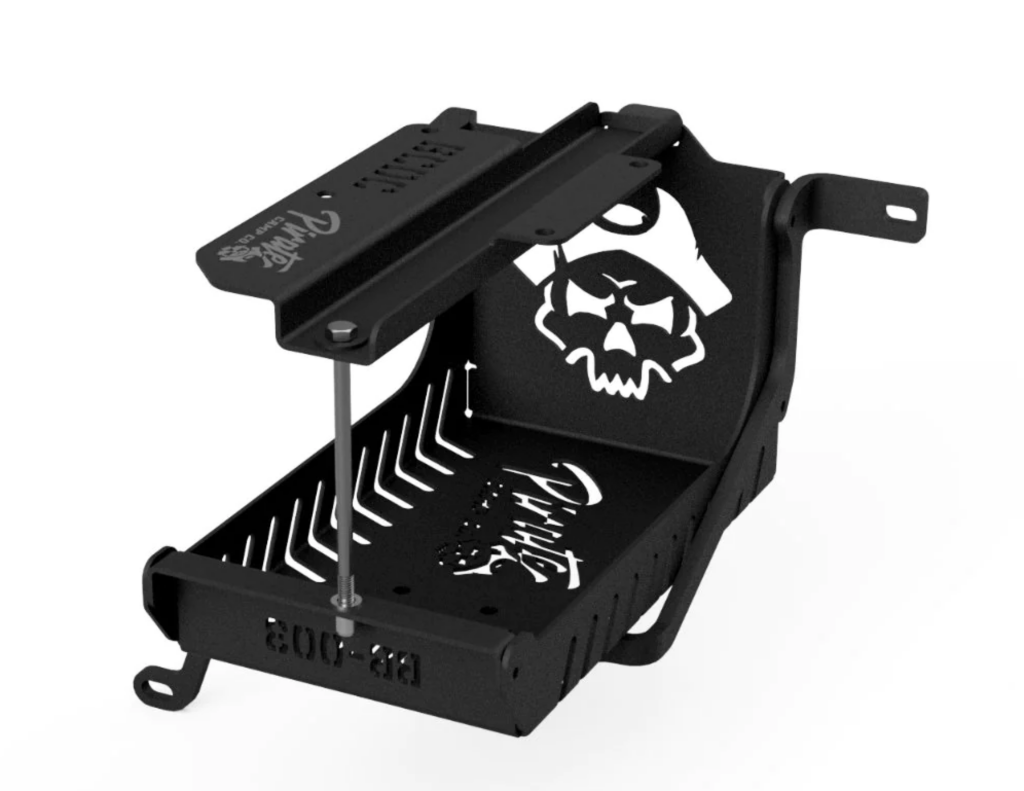
Specifications:
- Battery tray: Yes
- Charger: Mounts a Redarc BCDC1225D
- Cabling: Option
- Battery: Not included
- Location: Under bonnet
Things we like
- Mounts Redarc BCDC charger
- Maximum battery height of 190mm
- Easy DIY installation
Not so much…
- Battery not included
- Under bonnet location
ARB auxiliary battery kit
This is a kit that allows for an auxiliary battery to be added to the engine bay of the Ford Ranger, in order to power additional items without draining the main battery. It includes a battery tray, mounting bracket, charger, wiring, and hardware, but does not include the battery or outlet wiring. It is not compatible with the Ranger Raptor model. It is a licensed accessory by ARB that is backed by a Ford warranty.
Ford Australia has a licensing agreement with ARB. Order ARB accessories when you order your next-gen Ranger, and they’ll be covered by Ford’s five-year warranty. So if you have a warranty issue, there are no grey areas about which company’s responsible.
If you order ARB accessories after purchase (through a Ford dealer), they’ll be covered by the remainder of the warranty period. If you’d like to know more about the Ford/ARB partnership, then go here.
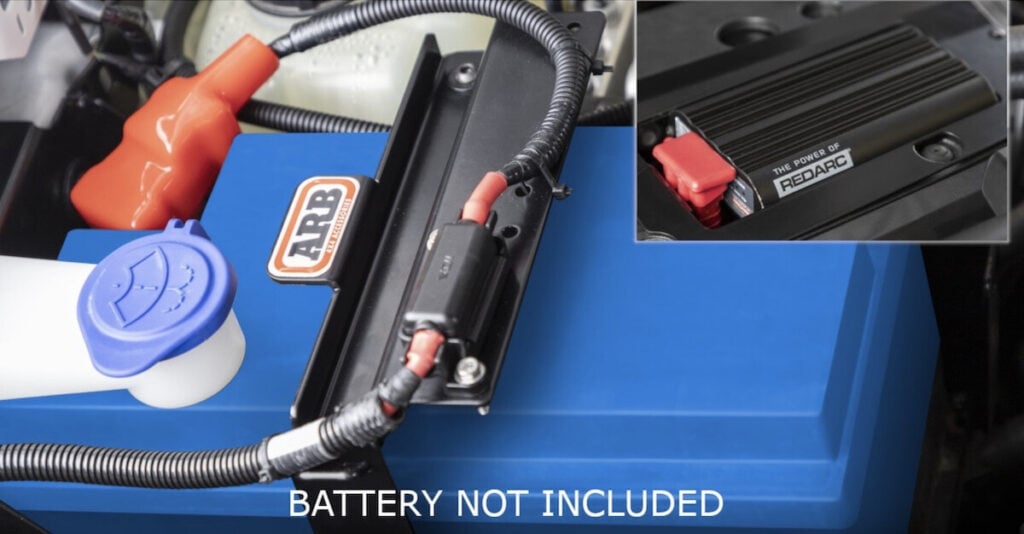
Specifications:
- Battery tray: Yes
- Charger: Redarc BCDC1225D
- Cabling: Up to BCDC input only
- Battery: Not included
- Location: Under bonnet
Things we like
- High-quality Redarc BCDC charger
- All wiring supplied up to BCDC input
Not so much…
- Battery not included
- Under-bonnet location
4×4 Outdoor battery kit
This next-gen Ranger and Everest dual battery under-bonnet tray accommodates batteries up to 120Ah or those with dimensions of 185mm(W) x 345mm(L) x 220mm(H) or smaller. It is compatible with V6 and bi-turbo models. The kit includes a tray and under-support brace. The kit is easy to install and suitable for DIY installation, with an available installation video for reference.
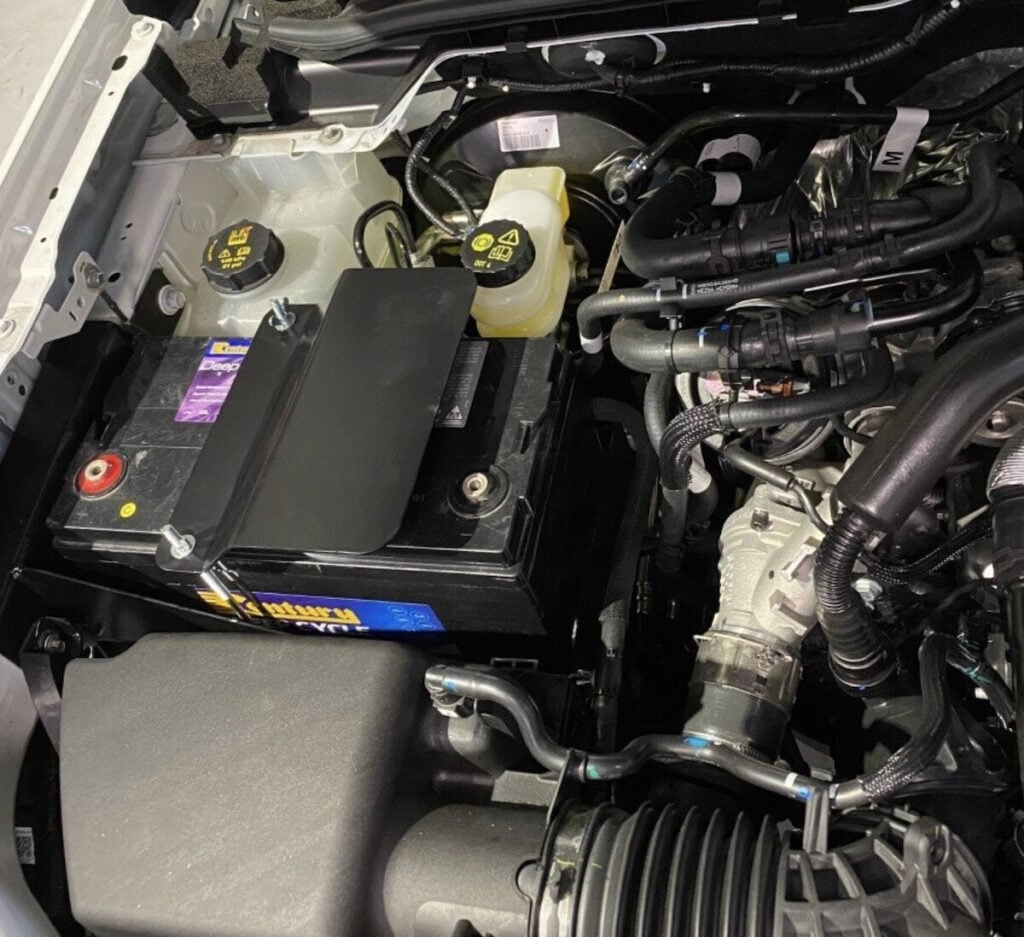
Specifications:
- Battery tray: Yes
- Charger: Option
- Cabling: Option
- Battery: Option up to 120Ah
- Location: Under bonnet
Things we like
- Build kit to suit your needs
- DIY or workshop installation options
- Installation video available
Not so much…
- Under bonnet location
Off Road Downunder battery kit
The battery tray is designed for the 2022+ Ford Ranger RA and is a precision laser-cut battery tray that fits the Invicta Lithium 40Ah battery under the rear seat.
The tray is made of 2mm-thick Australian mild steel and features a durable powder-coated finish. The kit includes the battery tray base, side mounting bracket, heavy-duty cam-buckle strap, installation bolt kit, and step-by-step instructions.
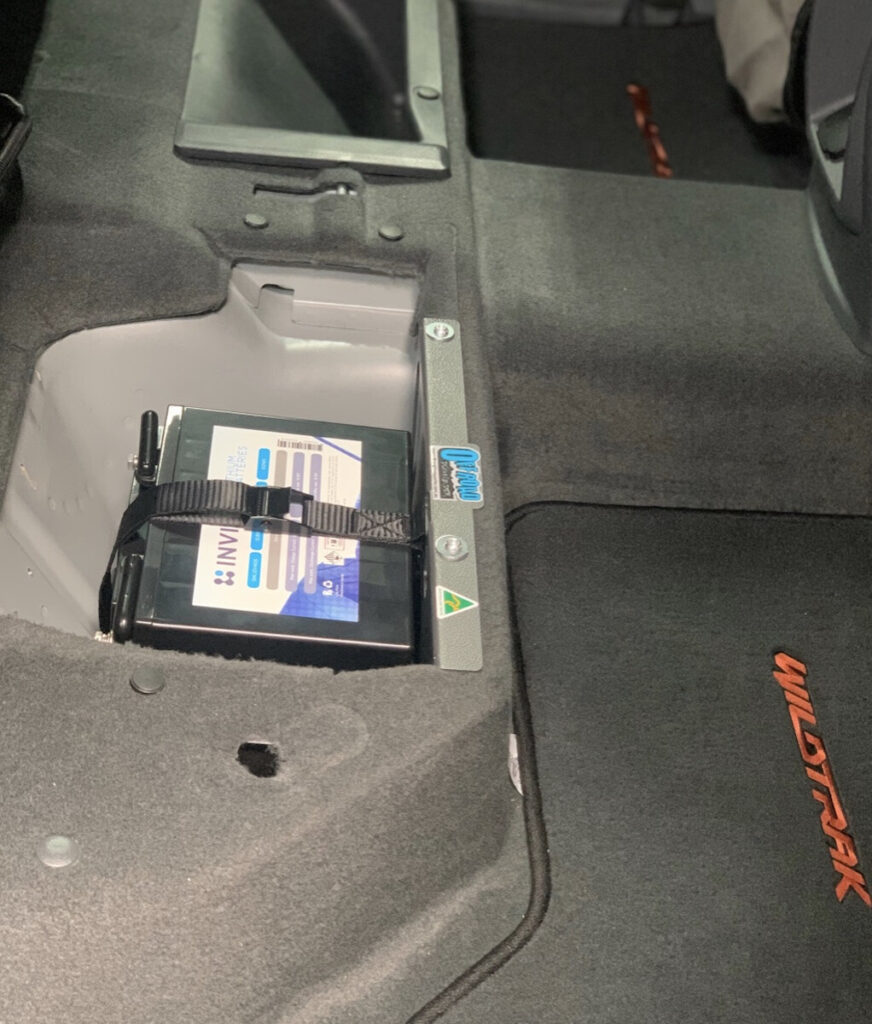
Specifications:
- Battery tray: Yes
- Charger: Option
- Cabling: Option
- Battery: Option up to 40Ah lithium
- Location: Under rear seat
Things we like
- Away from engine-bay heat u00b7
- Uses otherwise empty space
Not so much…
- Limited battery capacity
- Need to drill holes for installation
Buyers’ guide: Dual-battery kits
What is it?
A dual battery system is a battery with its own charging system, installed in a vehicle or boat. They’re pretty much essential for anyone who spends weekends camping or for longer touring trips. Dual battery systems enable you to charge all those devices we carry nowadays, keep the fridge cold, and power the lights around the campsite.
The battery provides 12 volt power for accessories… fridges, phones, camp lighting, and so on. By adding an inverter, you can have 240VAC on hand as well. The charging system keeps the battery charged. It uses power from devices like solar panels.
Why do you need it?
Your devices need charging while you’re camping or travelling… phones, tablets, laptops, and so on. And you’ll probably have at least one fridge, plus an inverter to run 240VAC devices. You can’t possibly run all this gear off the starting battery. It’d be flat in no time, and it’s not designed for repeated gradual discharging.
So sooner or later, your start battery will throw the towel in. Usually this happens when you’re camping alone in a remote place with no phone reception. I can tell you from first-hand experience, there’s no worse sound in the bush than the horrible dead “ticking” noise when you turn the key.
How do you avoid killing the start battery, yet still have the convenience of charging all your devices? By installing a dual battery system. This way, you can run all kinds of devices from the second battery. The worst that can happen is you’ll run out of power and the fridge will get warm. That’s a whole lot better than being stranded in the middle of nowhere with a flat or dead starting battery.
Buying Tips
We said earlier, a dual battery system’s a battery with its own charging system. Let’s look at it more closely. The battery must be able to handle gradual loss of charge and recharge, repeated thousands of times. In contrast, a starting battery provides a quick blast of power.
So the batteries are different. They’re called deep cycle batteries, meaning they’re happy to repeatedly cycle through deep discharges before being re-charged. A deep cycle battery is most commonly AGM (absorbed glass mat) or Lithium. If the word Lithium makes you think of fires, don’t worry.
Deep cycle Lithium batteries are the safe LiFePo4 type, not the more volatile Lithium-ion which are notorious for catching fire.
The charging system keeps the dual battery charged. It uses one or more sources of power:
- Power from the vehicle’s original electrical system
- Solar panels
- An external 240 volt supply
What charging system you use depends on your needs and budget. It can be as simple as a switch to turn on power from the vehicleu2019s starting battery, all the way up to a complex battery charging/monitoring/conditioning unit.
Dual battery systems come in many shapes and sizes. They broadly fit into two categories – permanent installations and portable units.
Installation options
You can install a second battery permanently in your vehicle or it can be portable. Both have pros and cons.
Permanent installation
Once the system’s installed, it becomes part of the vehicle. You can fit USB charging outlets, power devices like UHF radios or dashcams, and have the convenience of a 240VAC inverter. This way, they’re always connected.
For example, if you’re a tradie you can use the inverter to charge batteries for power tools on site during the week. Then on the weekend it can run the pie oven in your canopy. The downside is you need space to fit both the battery and the charging system. And it adds extra weight, especially if you use an AGM battery.
Portable dual-battery system
Portable units are the ideal solution for when you don’t have room for something more permanent… or if you want to share one dual battery system between two or more vehicles.
The features and battery capacity vary between units. At the lower end of the scale, you’ll get a small battery with one lighter socket for both charging and DC output. At the upper end are units that have:
- 100Ah lithium battery
- 240V AC mains charger
- Solar input
- Solar regulator
- Battery management system
- Battery monitor
- Anderson plug, USB ports, and cigarette lighter 12V outlets
Battery Type
AGM and Lithium deep cycle batteries are the best solutions for dual battery systems. AGM is older technology and should only be discharged to 50% of capacity. So, a 100Ah AGM battery effectively only has 50Ah of useful capacity.
Lithium batteries can discharge down to 20%, giving you 80Ah of useful capacity. And there’s a twist to this tale. Look carefully at the specs. Revolution Power for example specific their Lithium batteries as having 100Ah “nominal” capacity. This means the battery is actually larger than 100Ah… around 125Ah.
So, a quality battery with 100Ah nominal capacity has 100Ah of usable capacity. That’s double the capacity of an equivalent AGM.
The initial purchase price of Lithium batteries is many far higher than AGM batteries. However, a quality Lithium battery will last around 5,000 cycles (a cycle is one discharge and one recharge). In contrast, an AGM only lasts around 600 cycles for the same application. When you compare whole of life costs, a Lithium battery wins hands down.
There are other benefits to choosing Lithium over AGM. The most obvious is usable capacity. Quite simply, your Lithium battery will run your fridge for double the time, when compared to an AGM. This can mean the difference between a campsite with power on a cloudy day… or a hot fridge and no lighting.
Another benefit is weight. A Lithium battery is about half the weight of an AGM. For example, a 100Ah AGM weighs about 30kg while a 100Ah Lithium is around 14kg. Combine the weight savings with the doubled capacity of equivalent battery types, and the benefits of Lithium keep stacking up. You halve the space and reduce weight by three quarters (14kg instead of 60kg).
In short, if you’re on a tight budget then AGM batteries are the only choice. But if you can afford a bit more, you’ll save a stack of weight, space, and money in the long run.
Charging the battery
The charging system can be as simple as a solar panel with a voltage regulator and alligator clamps for connection to the battery.
However, it’s great to be able to charge the battery from a few sources… solar, the vehicle, and an external 240VAC supply. In this case you’ll need a controller, also known as a battery management system or a DC-DC charger.
A controller has two jobs:
- Choose the best available power source (solar, vehicle, and so on).
- Continually monitor the battery’s condition then charge it accordingly.
Any decent controller will operate as a battery charger, known as a DC-DC charger. It will monitor the battery and charge it using several charging stages. There are thousands of different controllers available. Choose one to suit your needs and your budget. One handy feature is a digital readout of the batteryu2019s charge level, so you can check it at a glance.
Finally, if you go with a Lithium battery then make sure the controller is compatible with charging of Lithium LiFePo4 batteries.
Where to install the system
Until now, the typical dual battery installation in a 4WD has been under the bonnet. With engines becoming more complex, under-bonnet real estate is getting harder to find.
But even if you do have space under the bonnet, try to find a better location. Heat kills batteries, especially Lithium batteries. In fact, don’t even think about sticking a Lithium battery under the bonnet. Find a spot in the tray or under a seat instead.
What to look for
When it comes to deep-cycle batteries, you get what you pay for. A cheap battery is cheap for a reason. This is especially true for Lithium batteries. They have an internal battery management system, cabling, and a bunch of Lithium cells.
Manufacturers of cheap Lithium batteries have to cut costs somewhere. They might use inferior quality components, cut corners during assembly, or even supply cells which don’t store the claimed battery capacity. This last point is important.
We said earlier how quality Lithium batteries usually specify nominal capacity. So a Lithium battery advertised as 100Ah will deliver 100Ah of usable capacity. However, the cheaper batteries use the smallest capacity they can get away with… remember how we said they need to cut costs?
The outcome? You buy a cheap Lithium battery rated at 100Ah and you only get 80Ah usable capacity. In short, you’re getting ripped off. Worse still, yes there are stories of Lithium LiFePo4 batteries catching fire. But the Lithium cells aren’t combustible, so how do they catch fire? It comes down to poor assembly. Wires short out and the electronic components catch fire. That alone is a good reason not to buy cheap Lithium batteries.
As for the controller, look for one which suits your needs. If you have solar panels, make sure the controller has a solar input. If you only camp at caravan parks, make sure it has a 240VAC input. You get the idea.
A dual battery system will make your camping life so much easier. Once you get one, you’ll wonder how you managed without it.
Back to top ⬆️
How we review products
4X4 Australia has been reviewing four-wheel drive vehicles and aftermarket products for more than 40 years.
When looking for the best accessories for your make and model of 4WD, there are some things essential to making sure you have the best off-roading experience. When we compare products, here are some of the things we consider:
- Warranty
- Build quality
- Value for money
- Time and ease to set-up/install
- Weight
- Fit and finish
- How well it gets the job done
- What materials they’re made from
- Corrosion/UV resistance
- Coatings
- Compatibility with other accessories
- Compliance with ADRs and vehicle safety systems
- Country of manufacture
- Load ratings,
to determine what’s the best product across each price point.
We also consider user reviews and our own experience with these products to make sure our recommendations are for the best on the market. Disclosure: When you buy through our links, we may earn a commission. We also include products that we do not earn a commission from.
